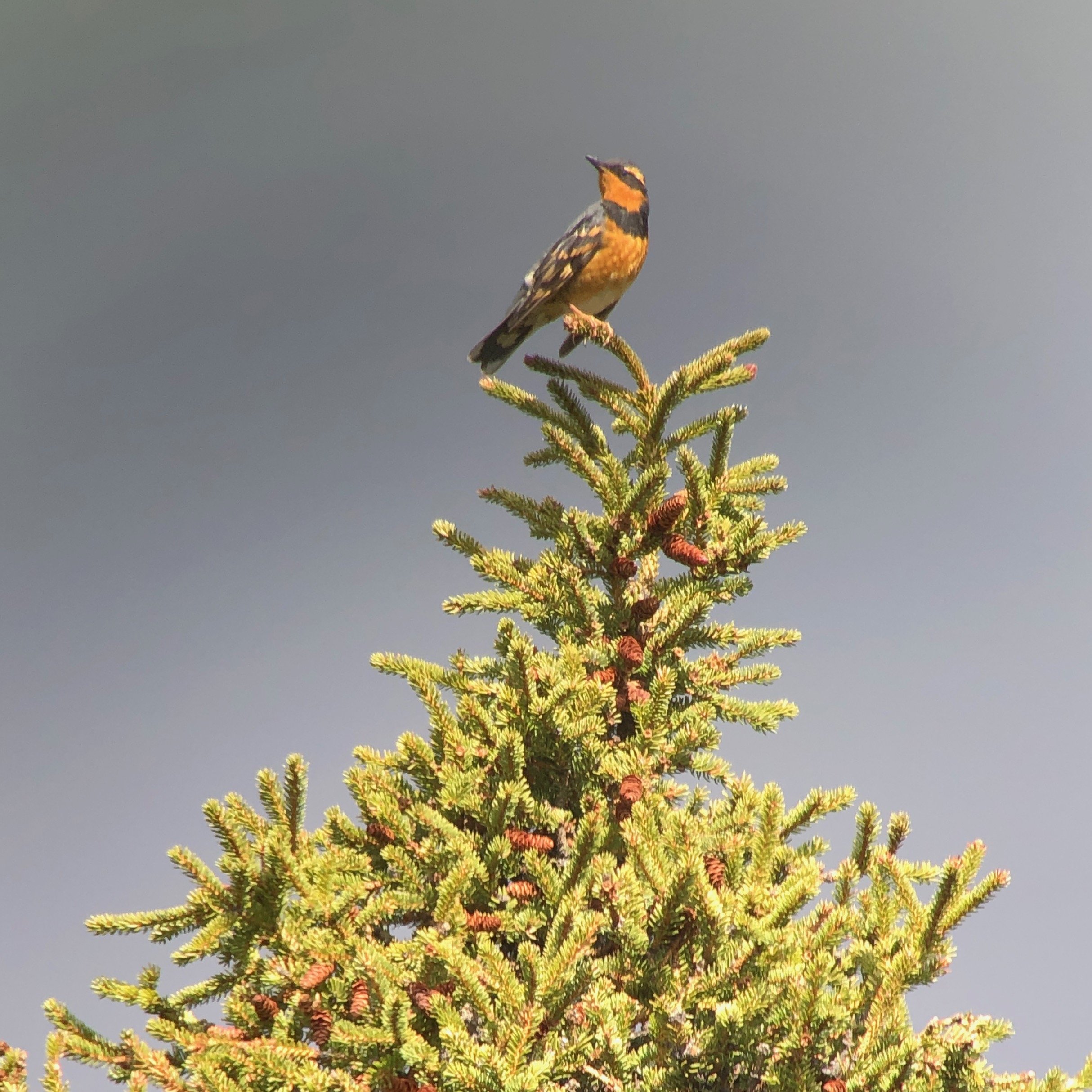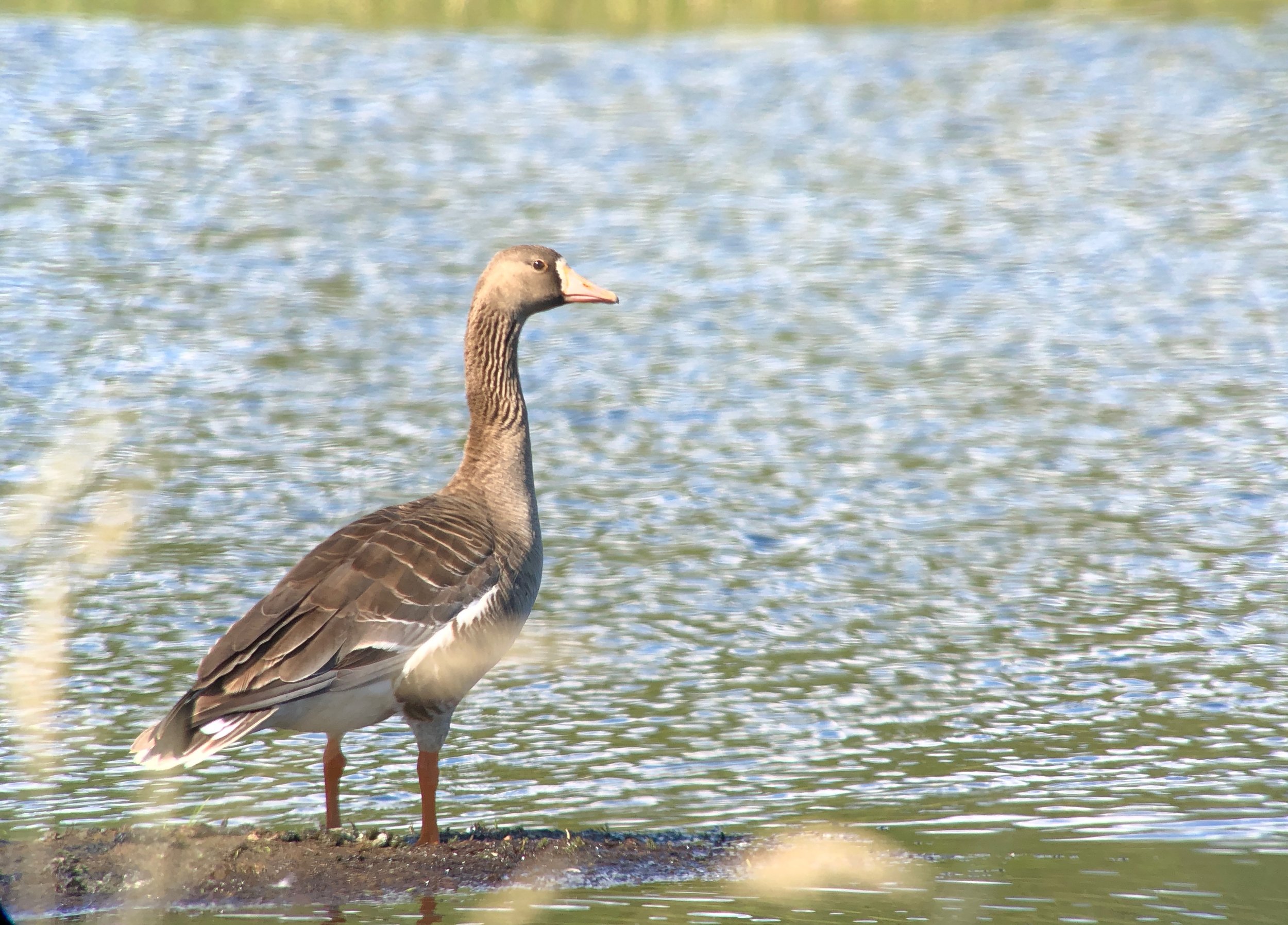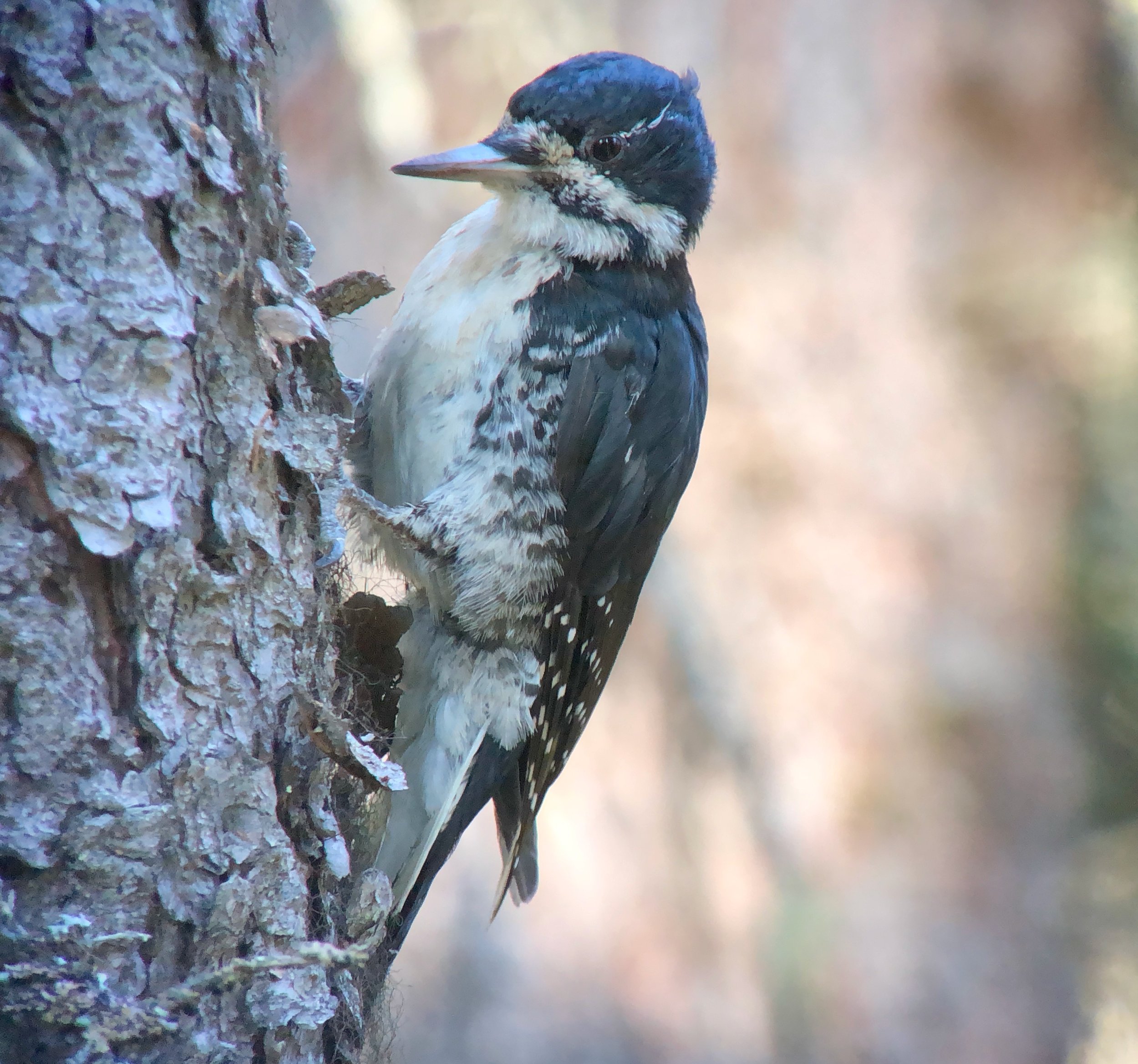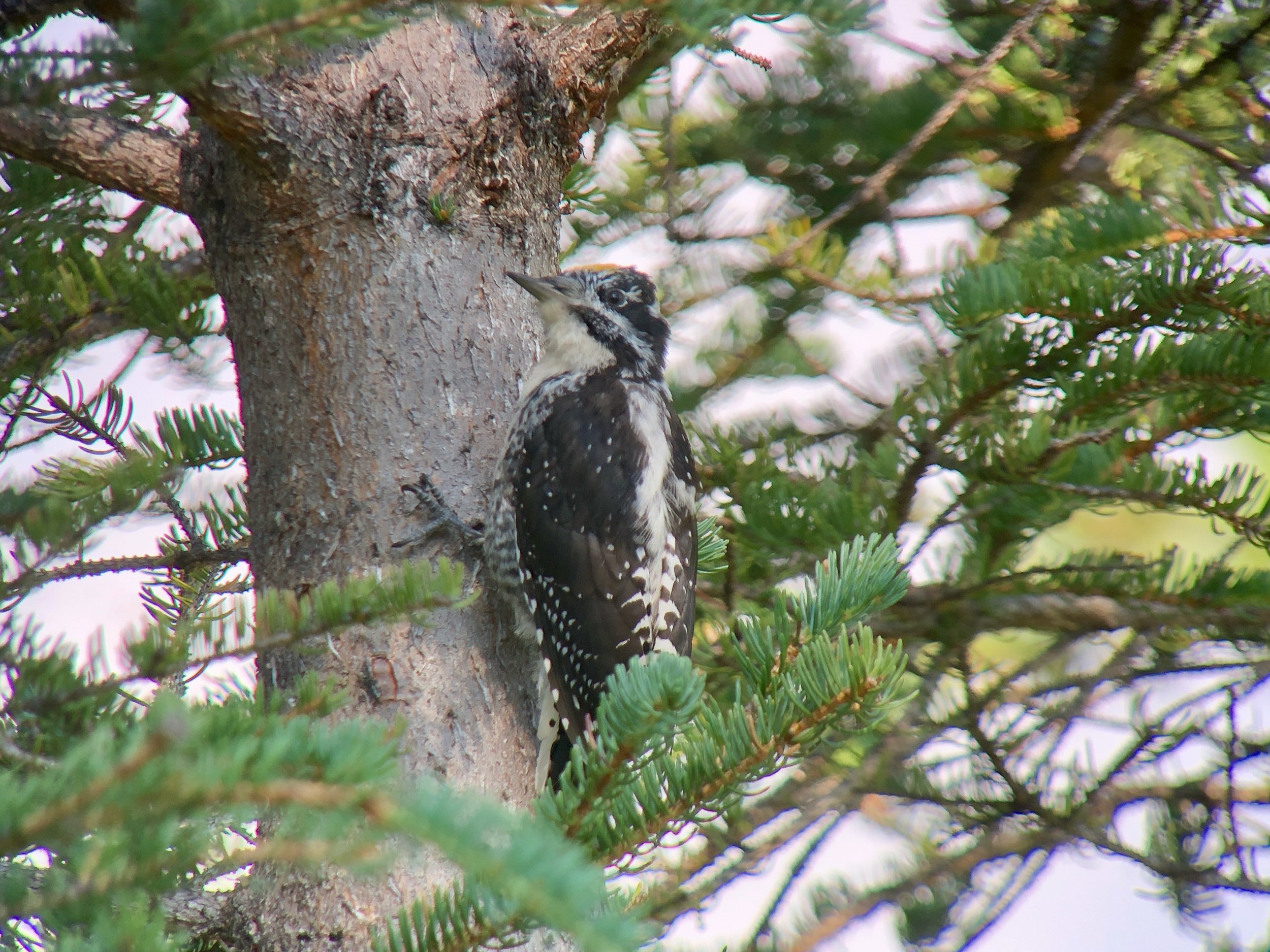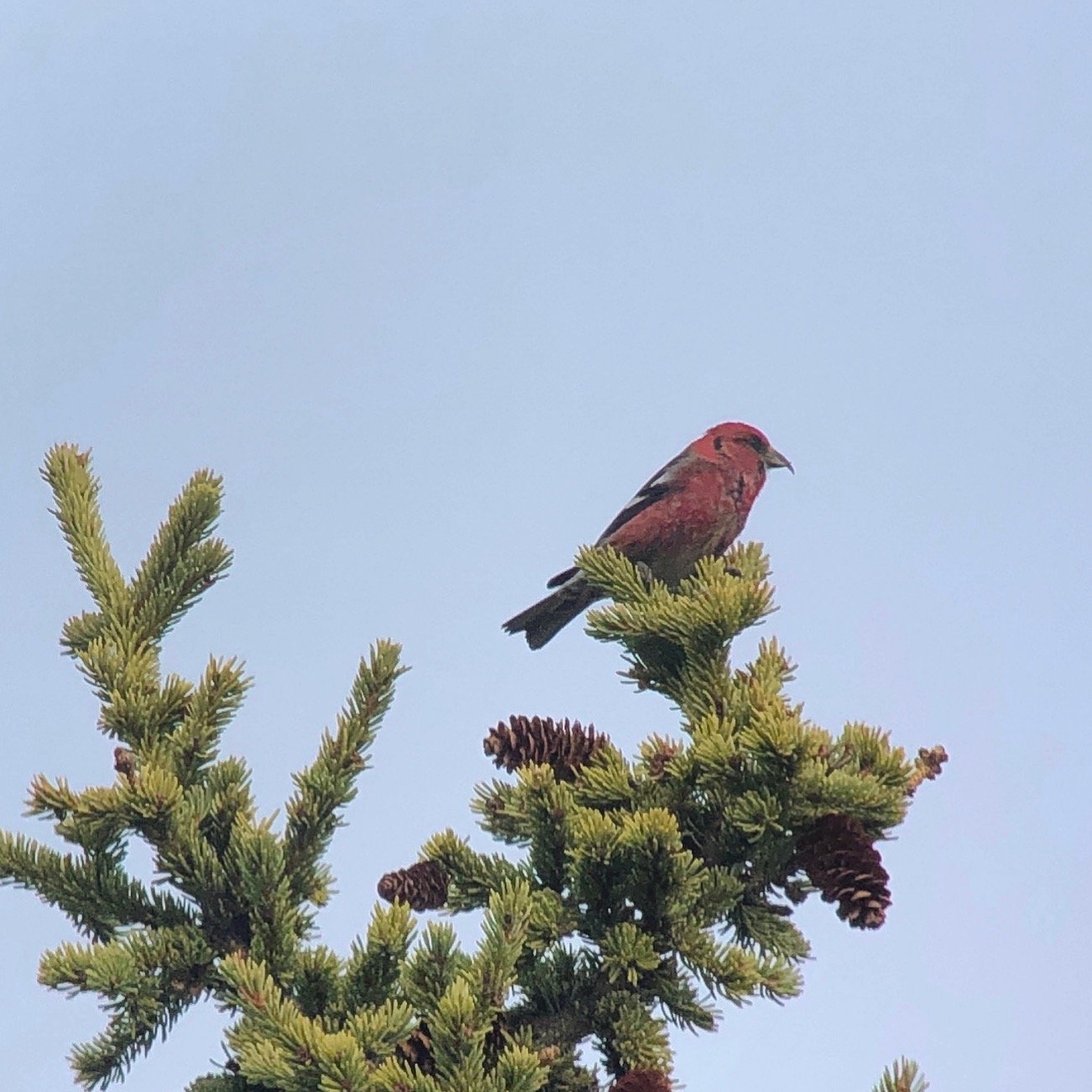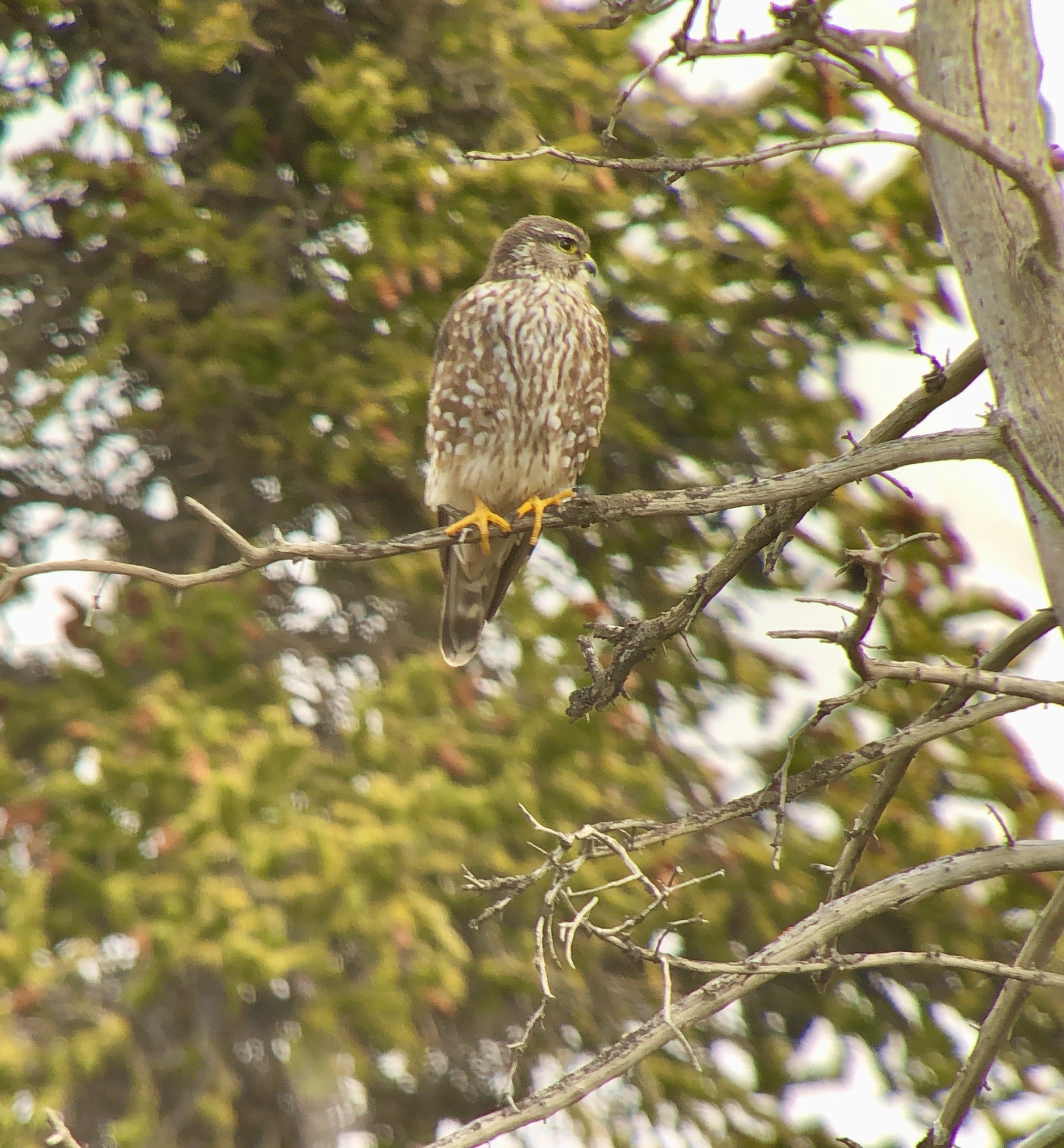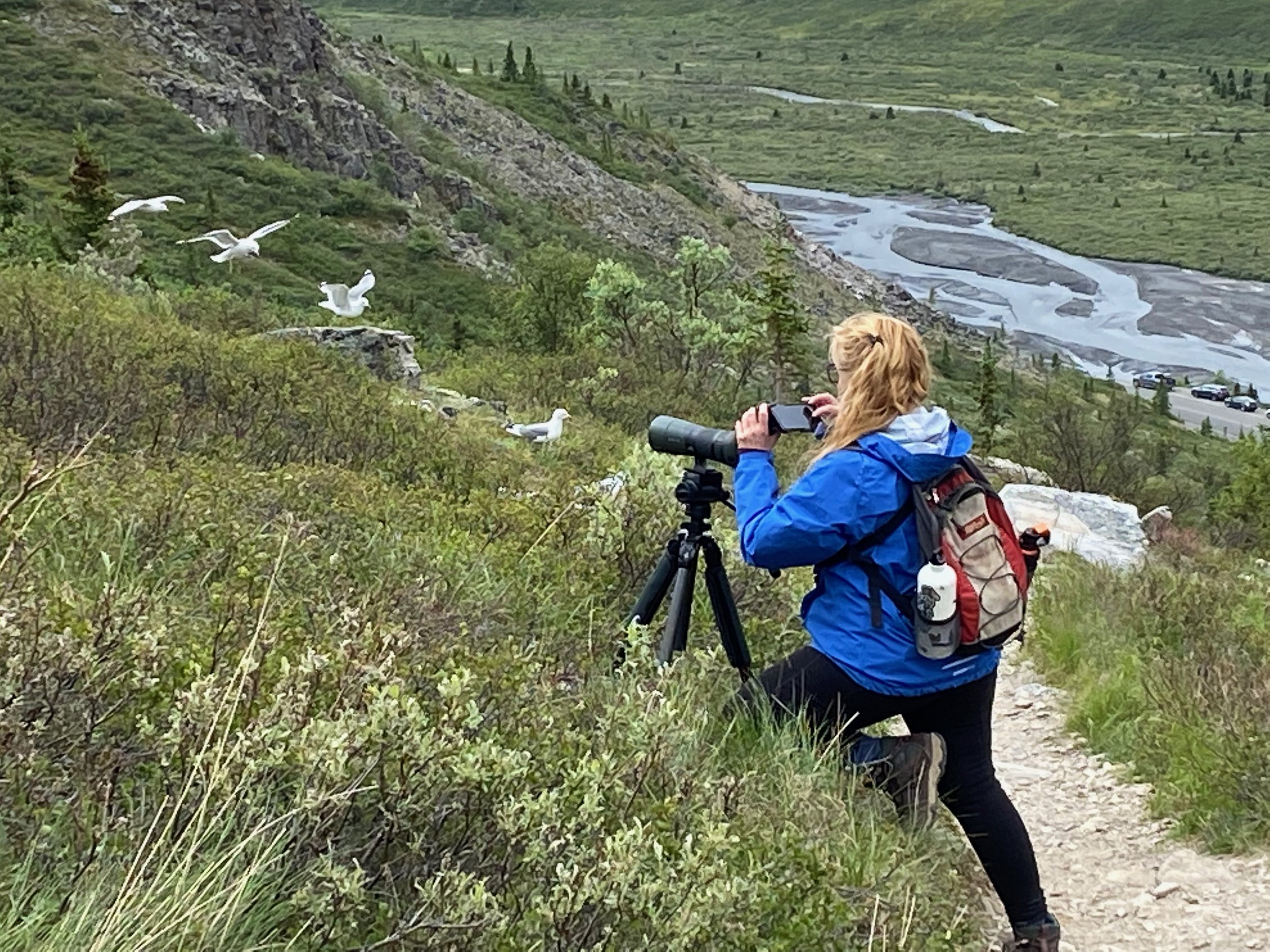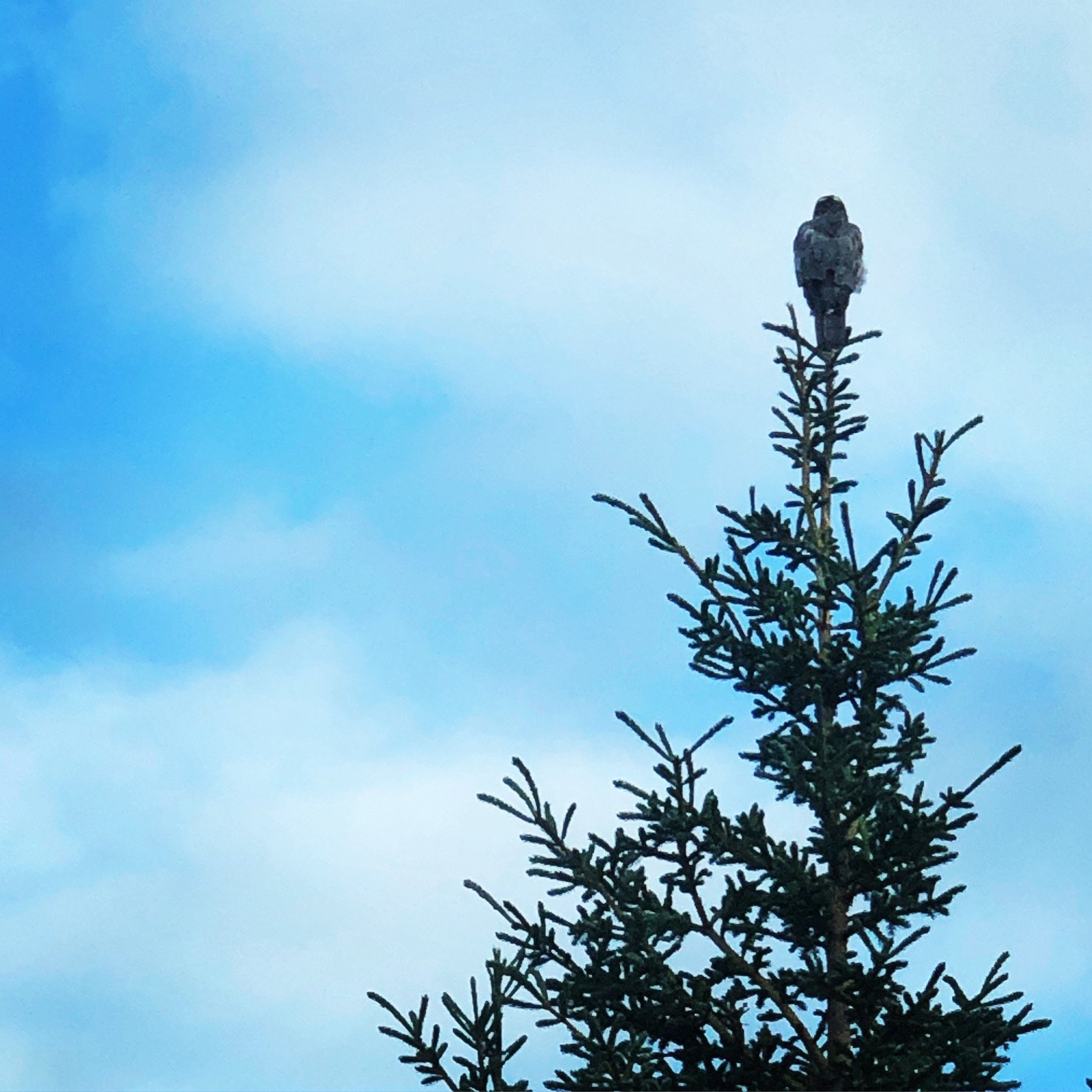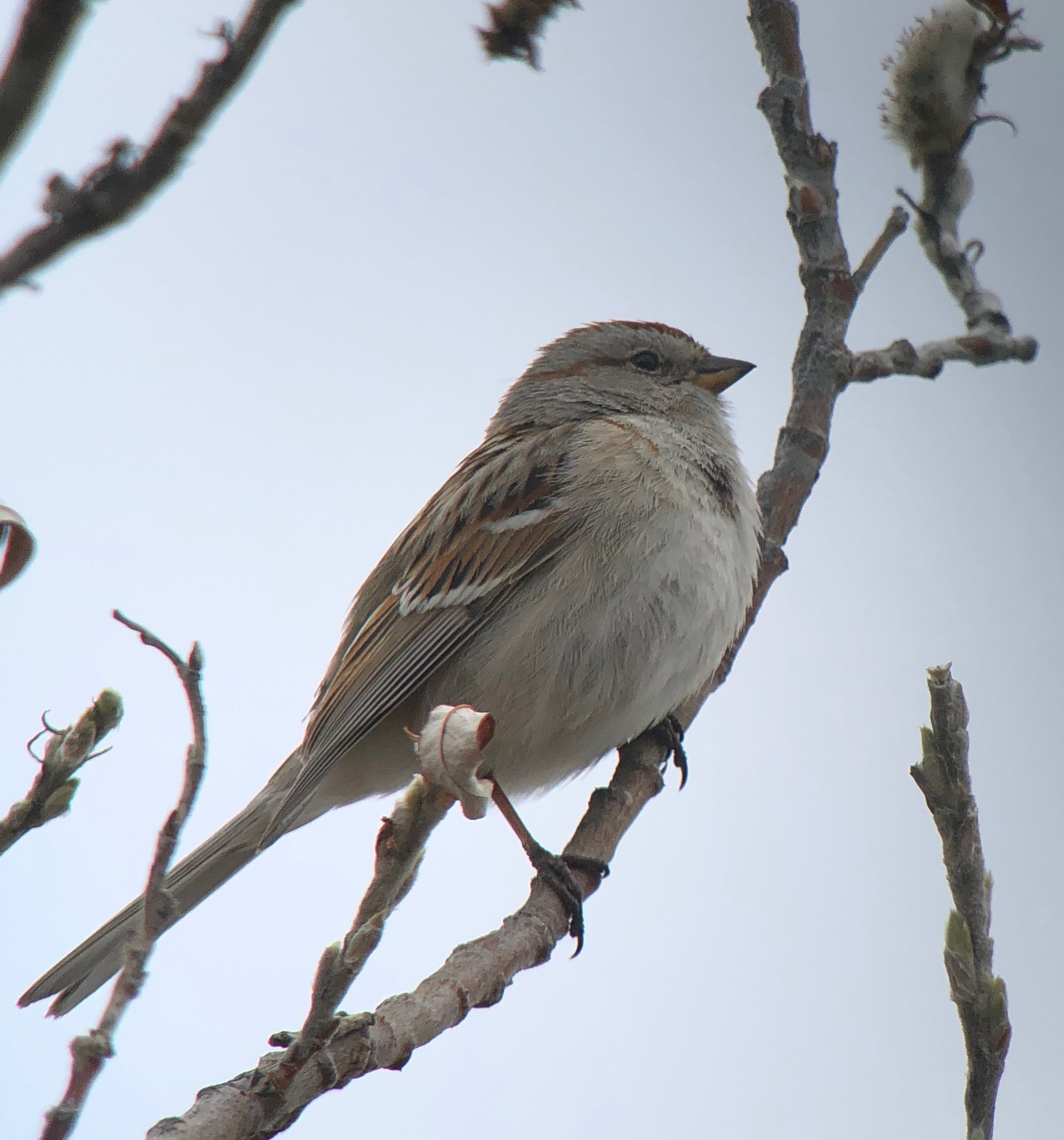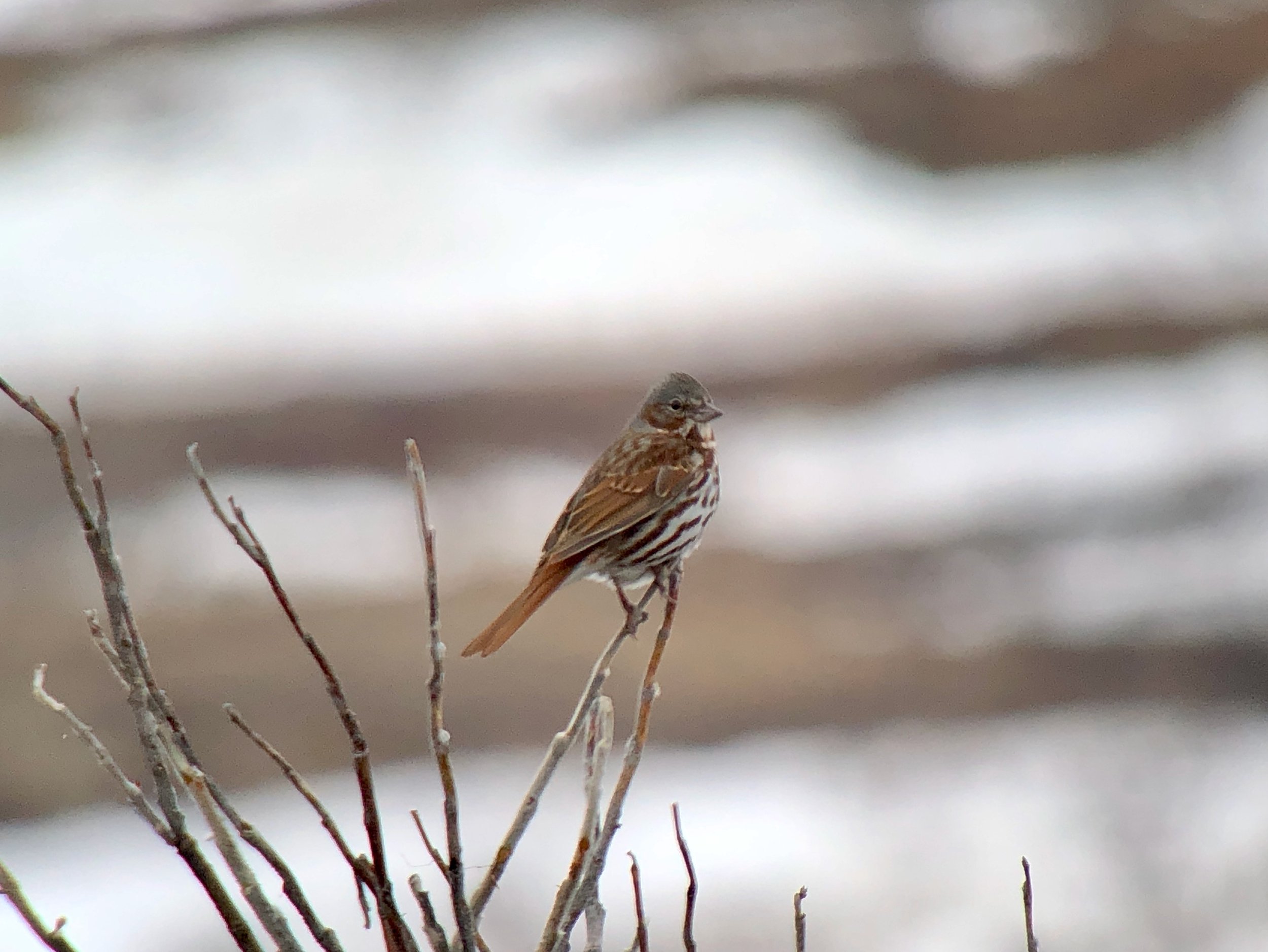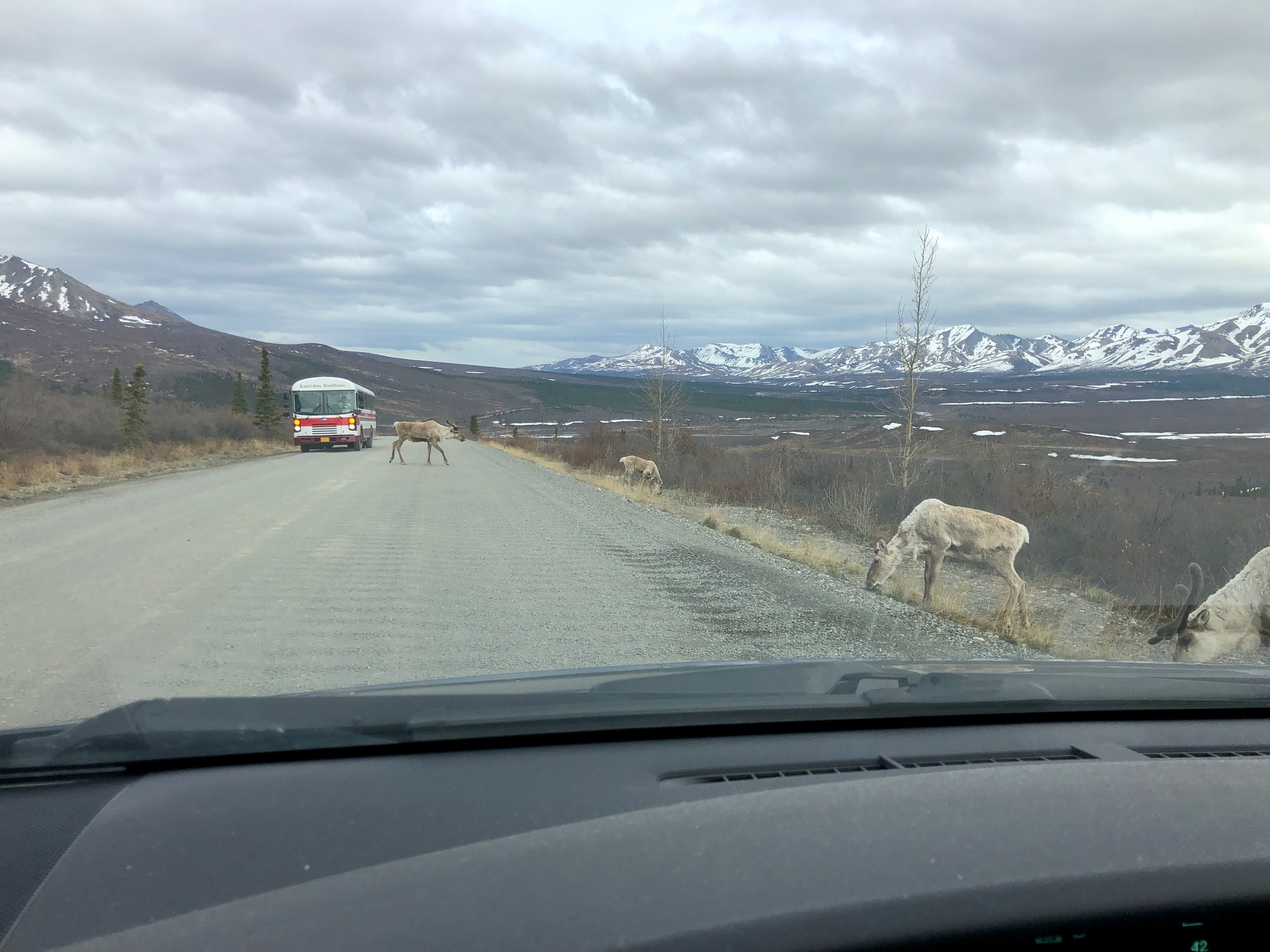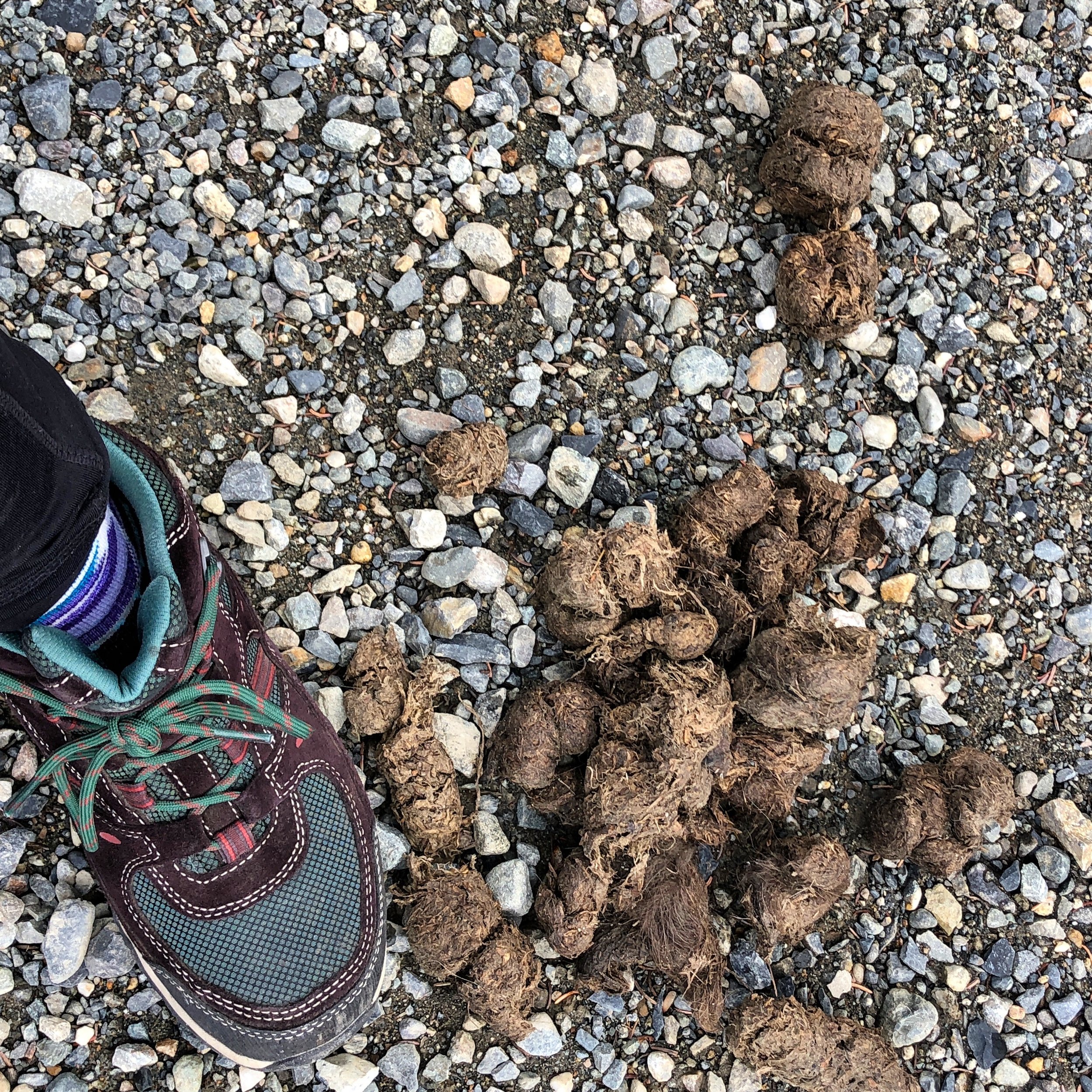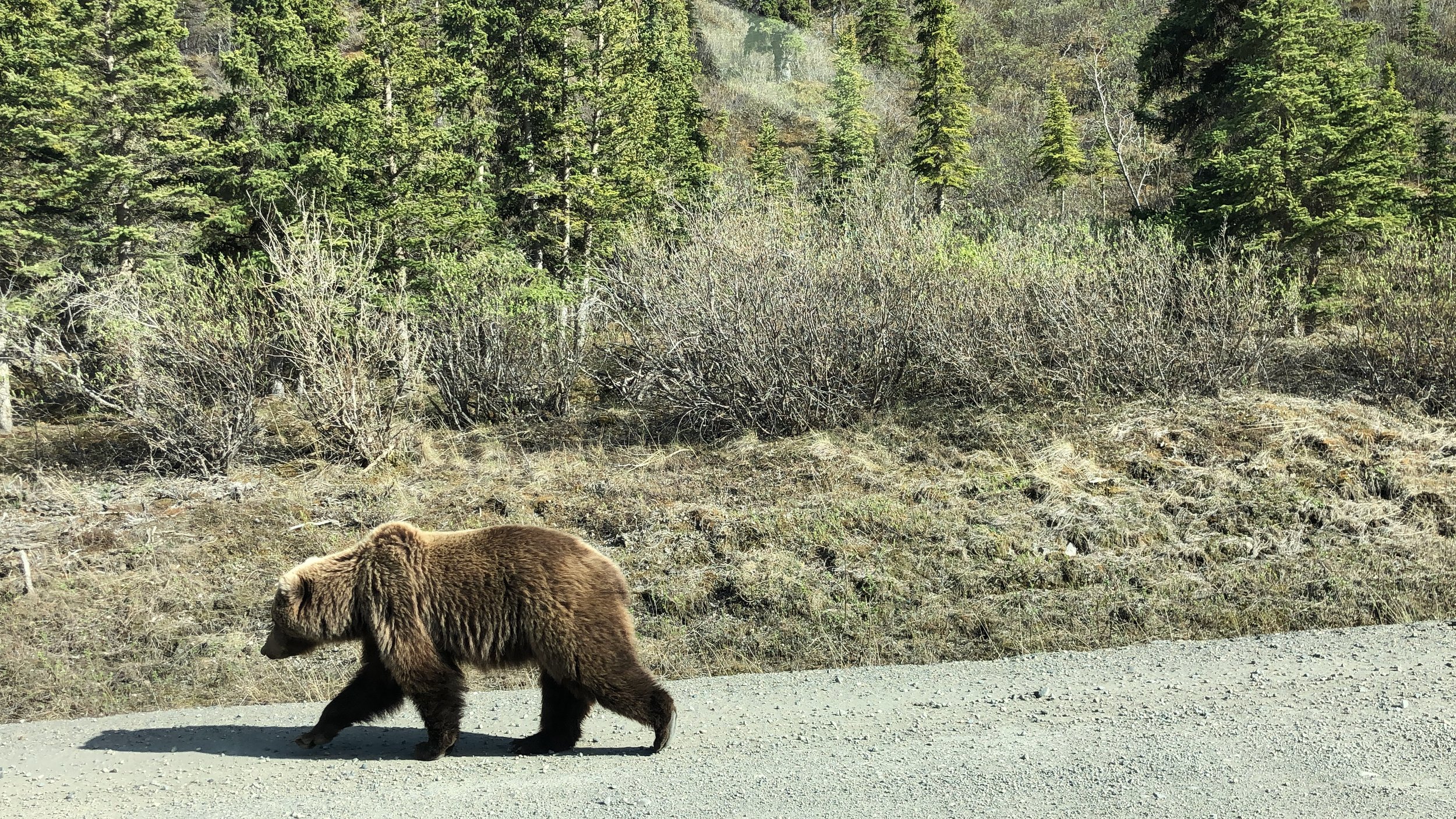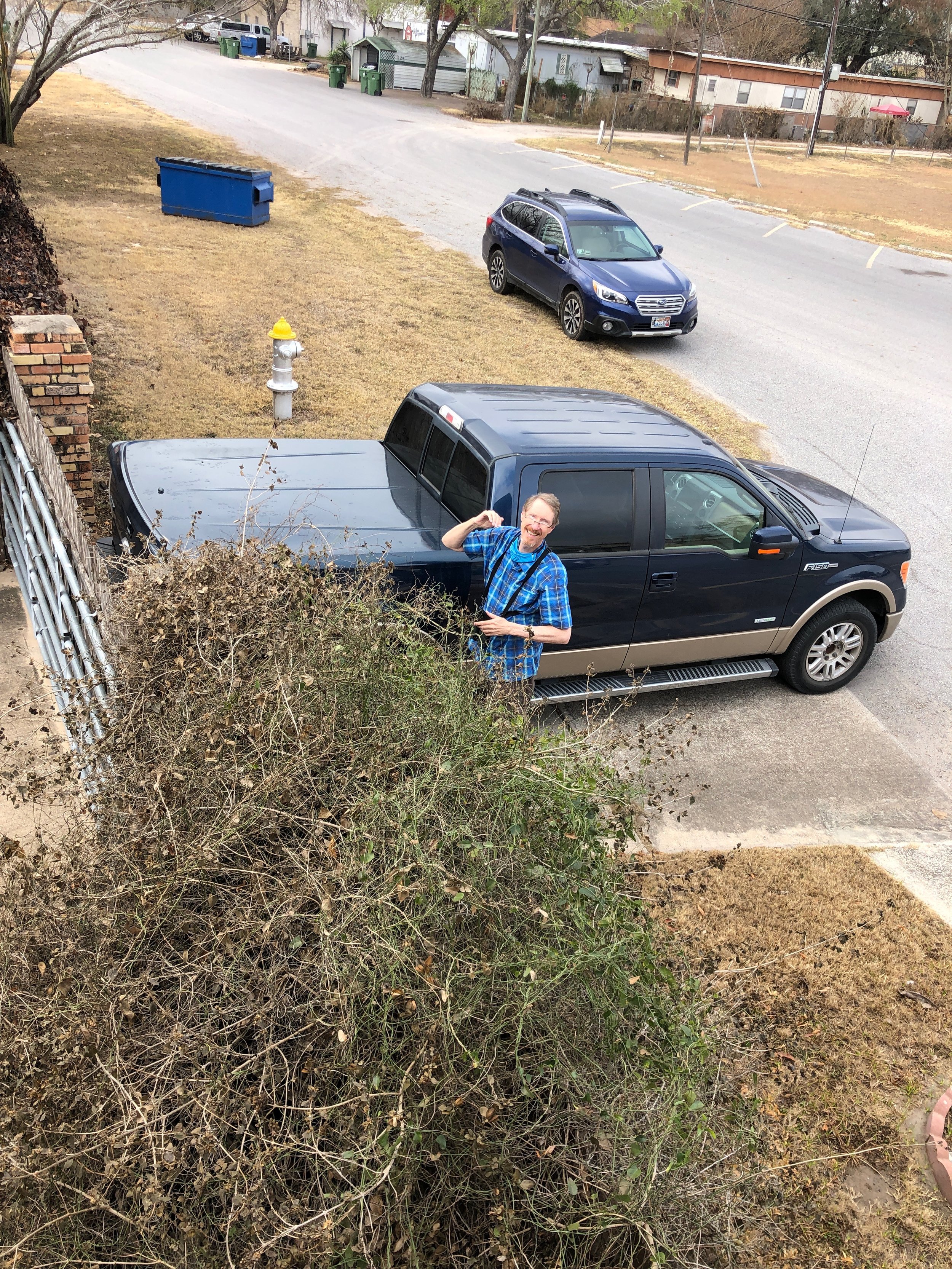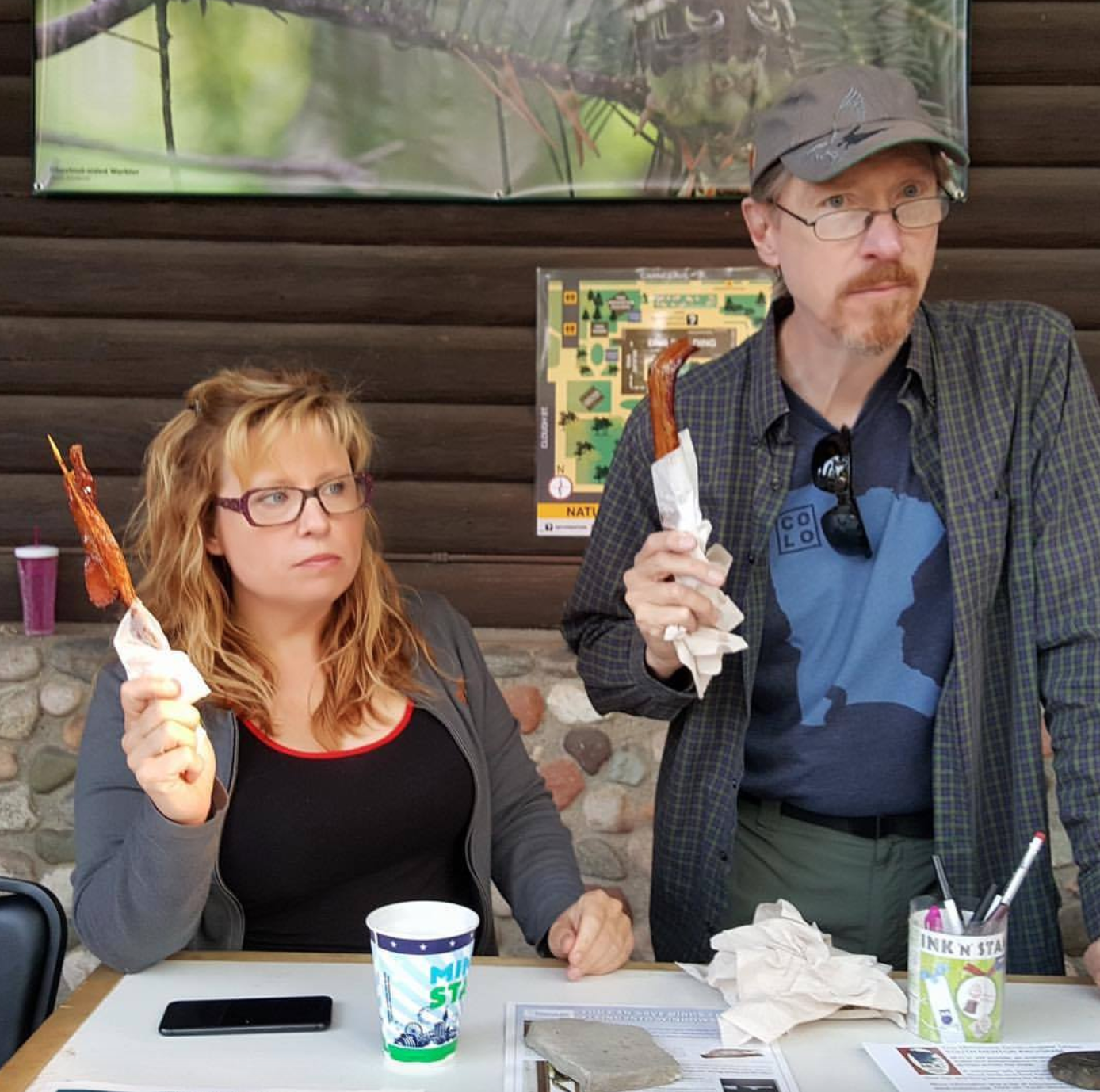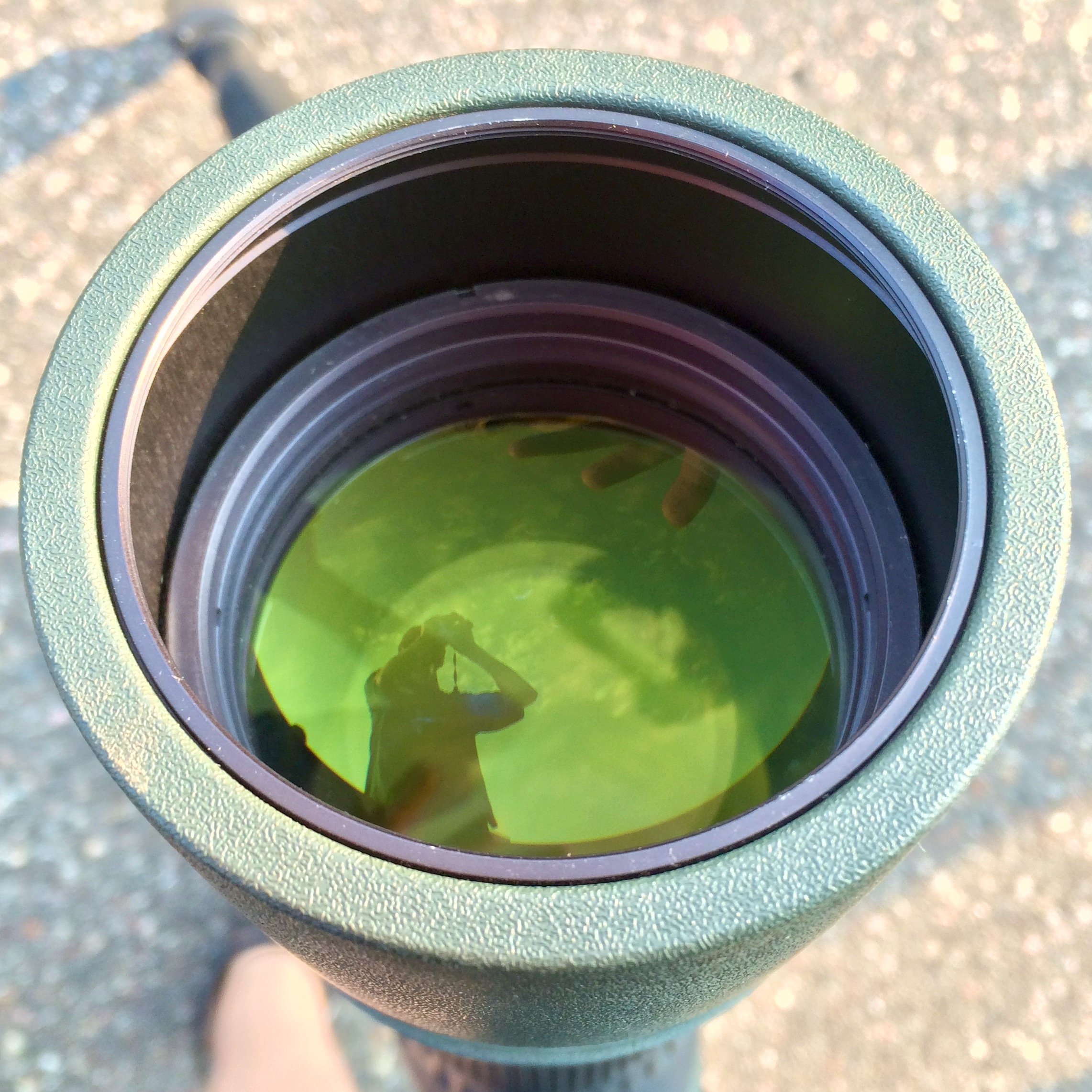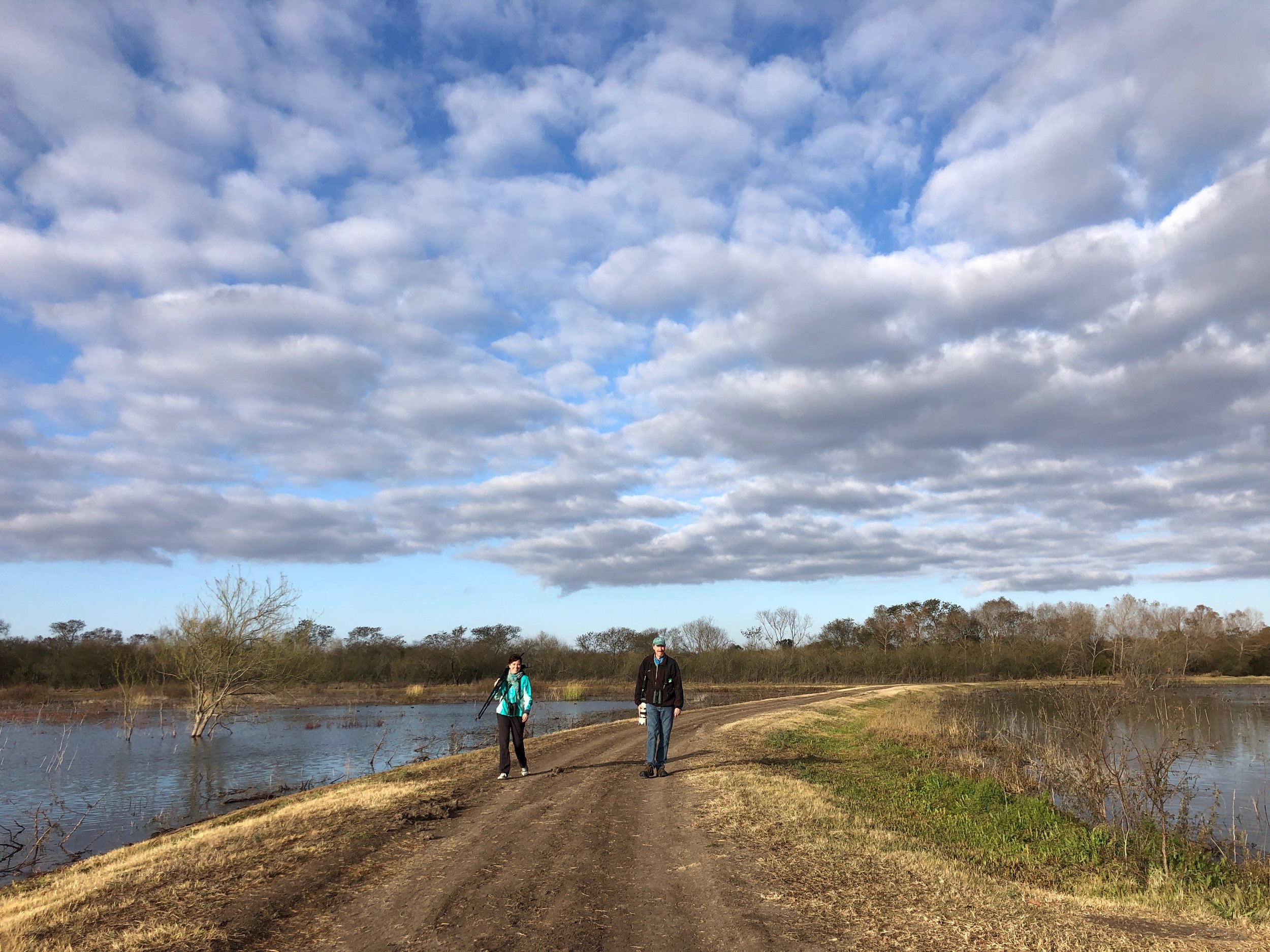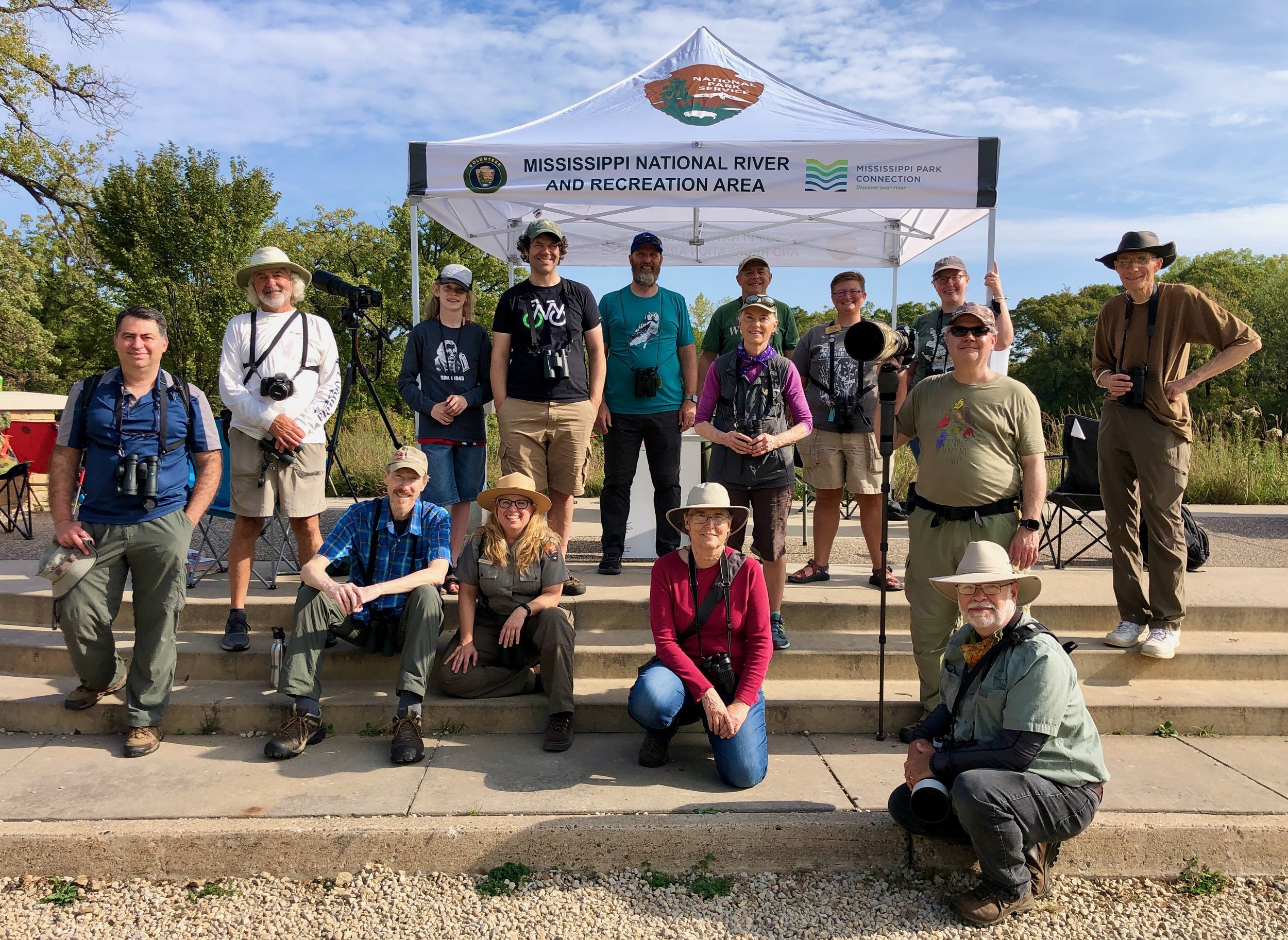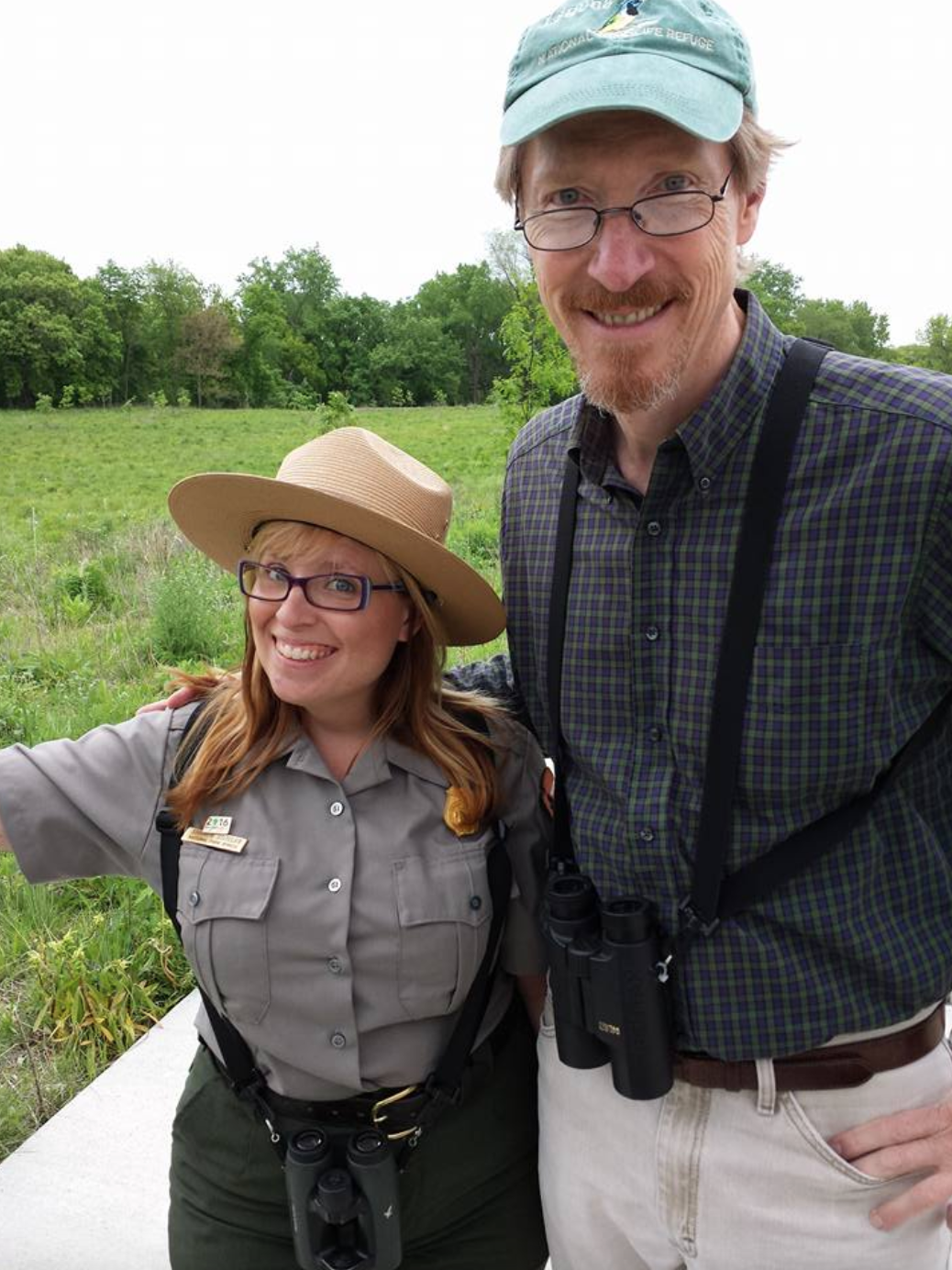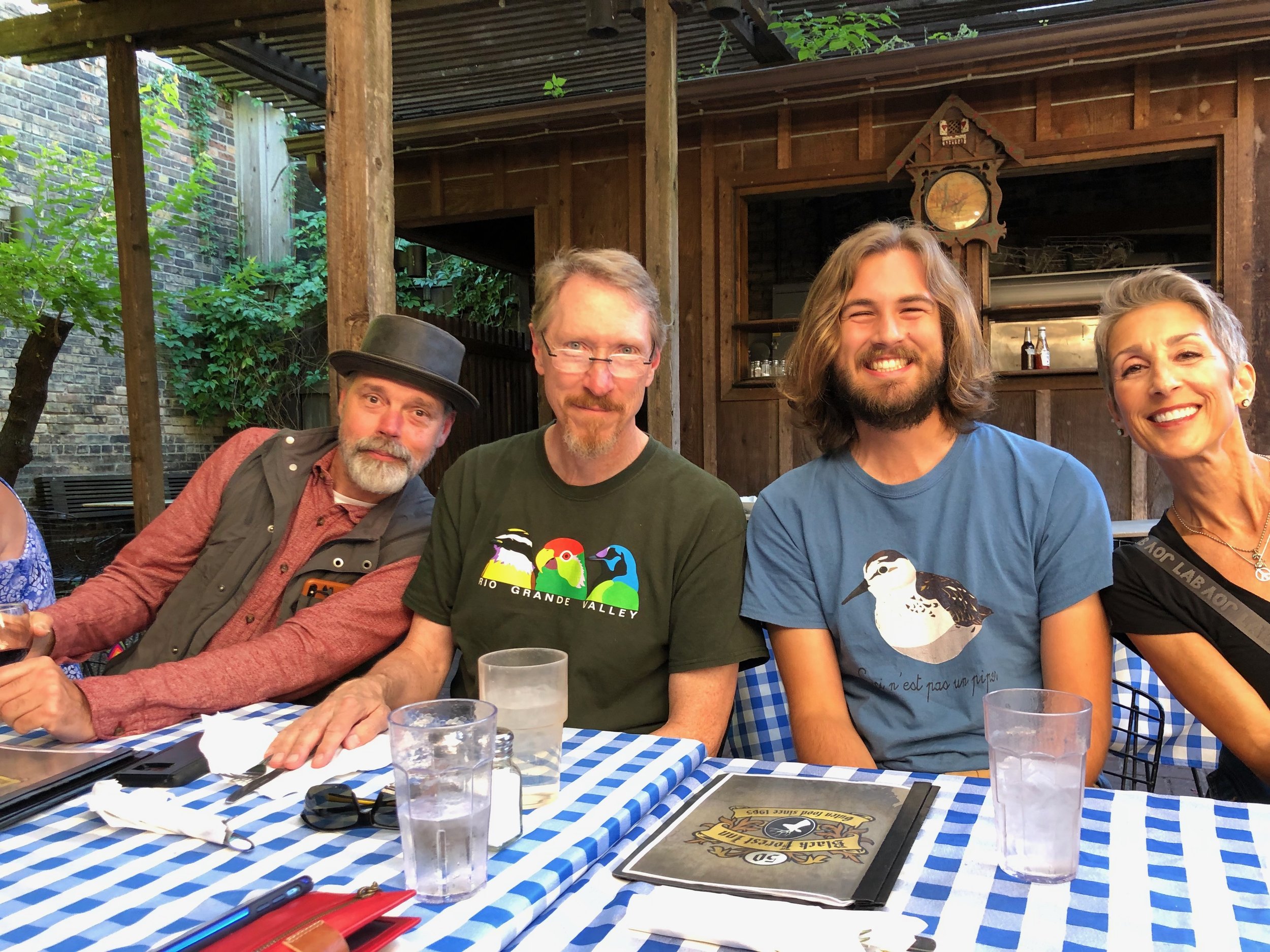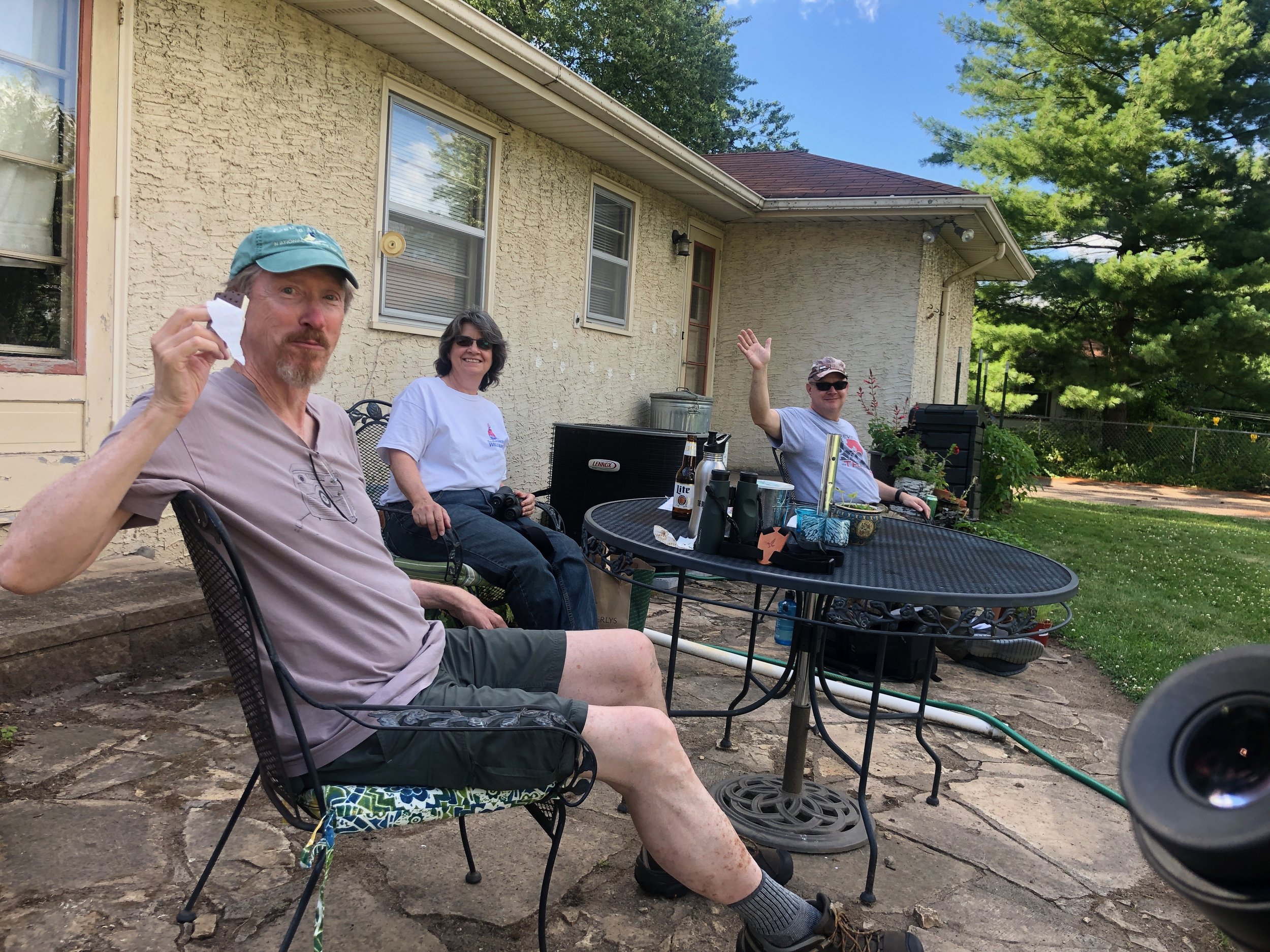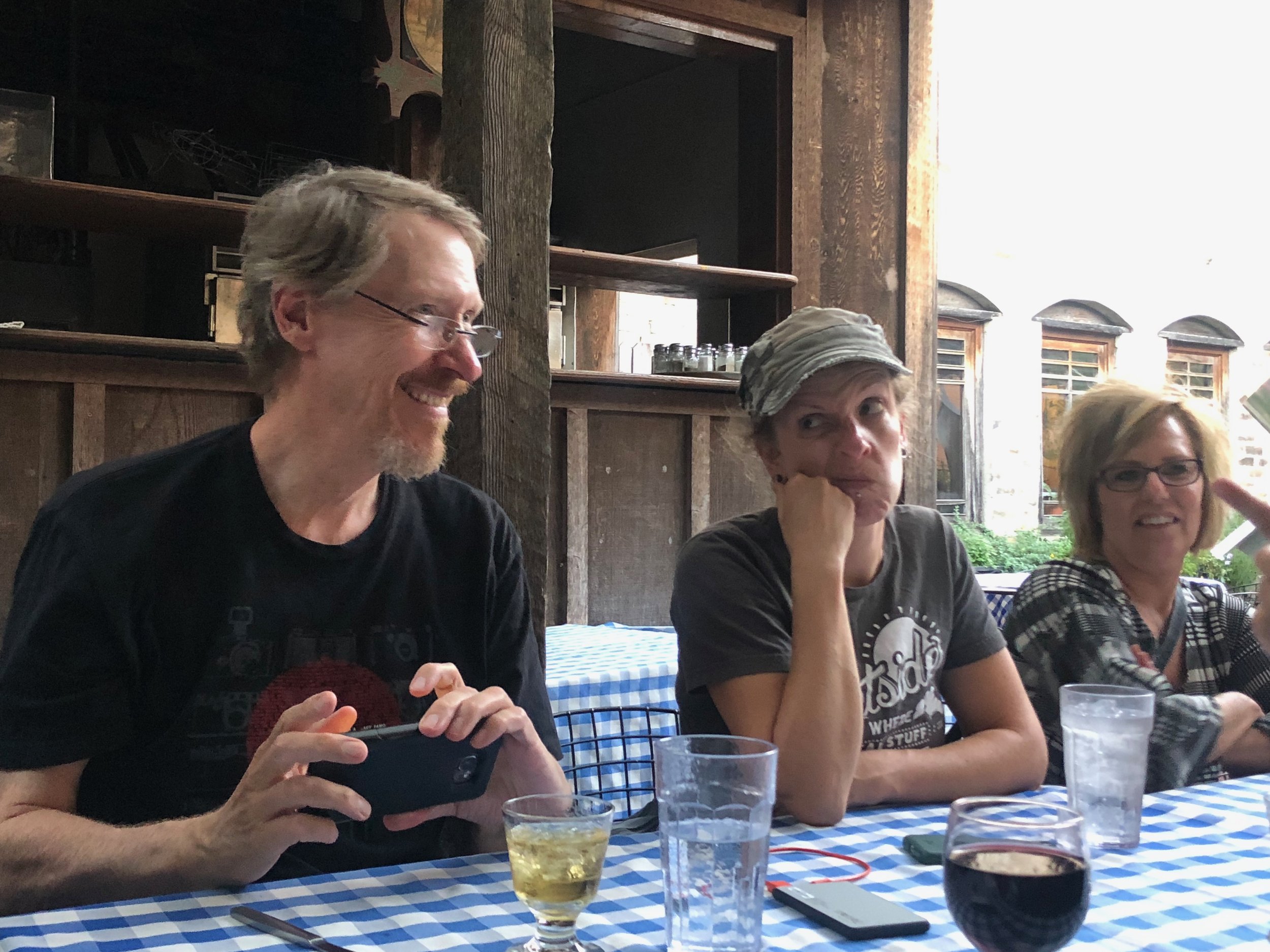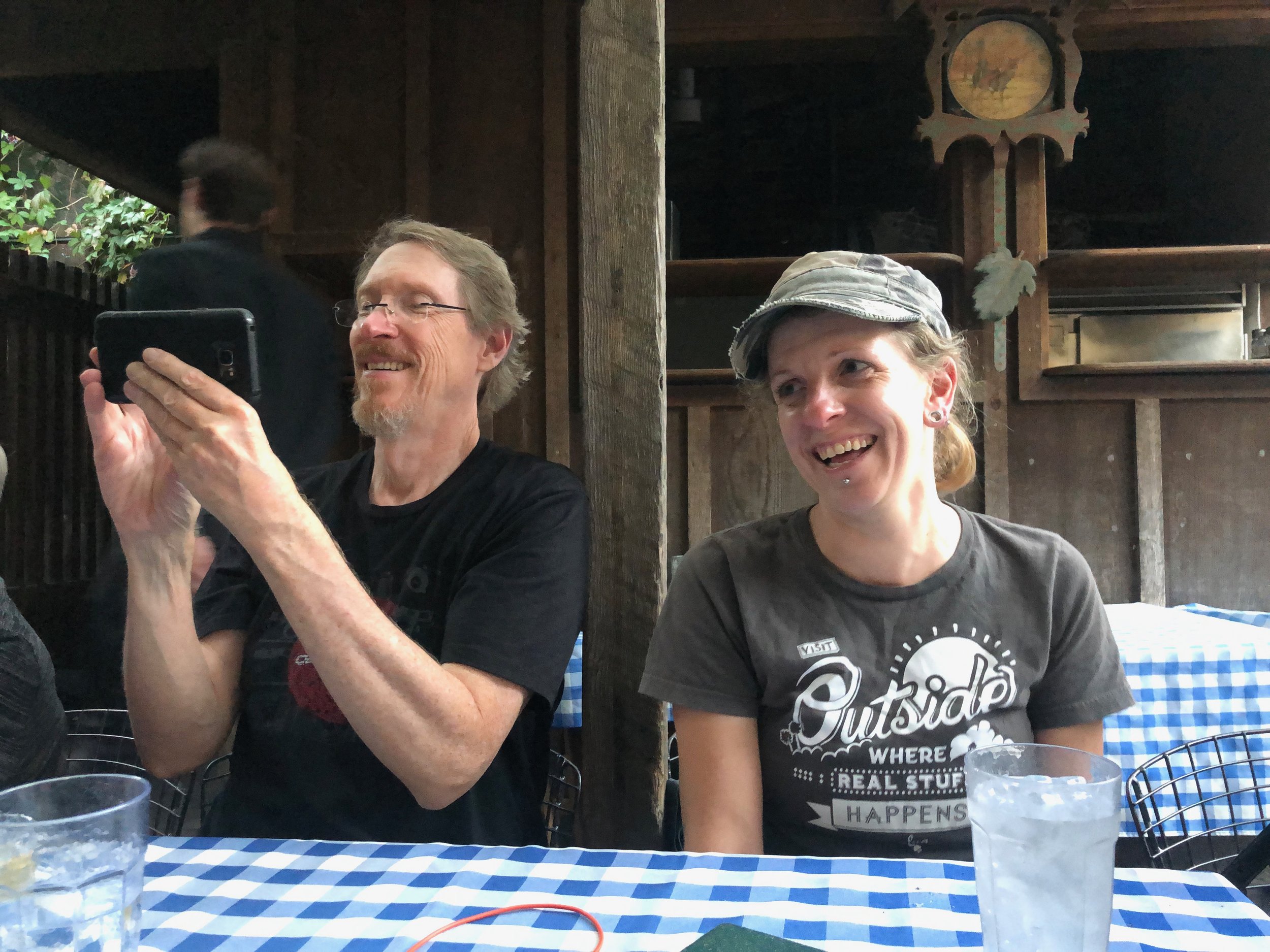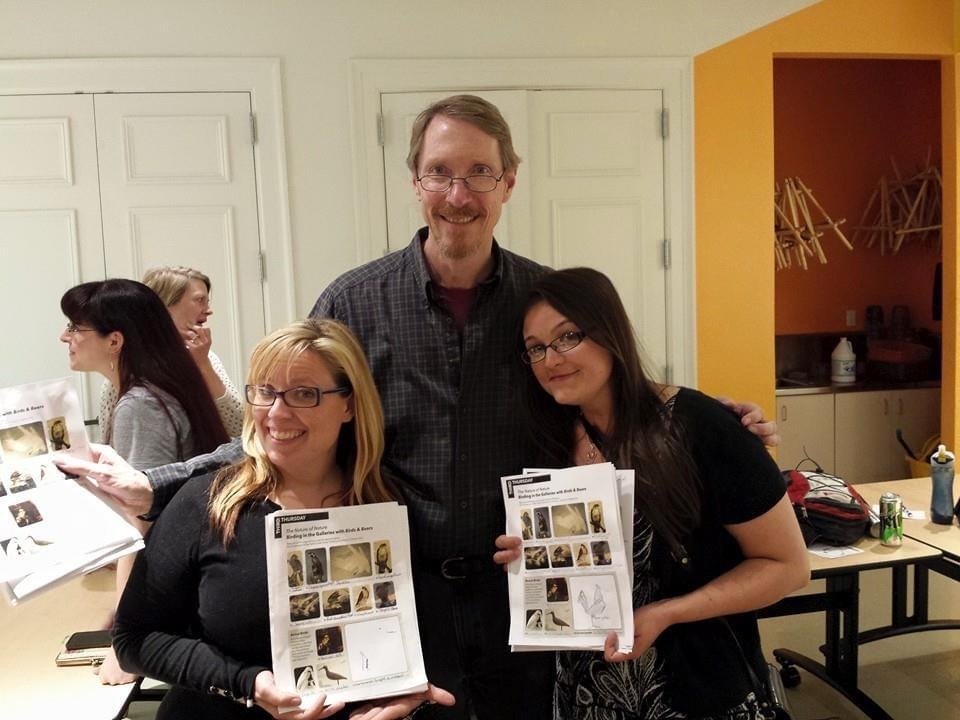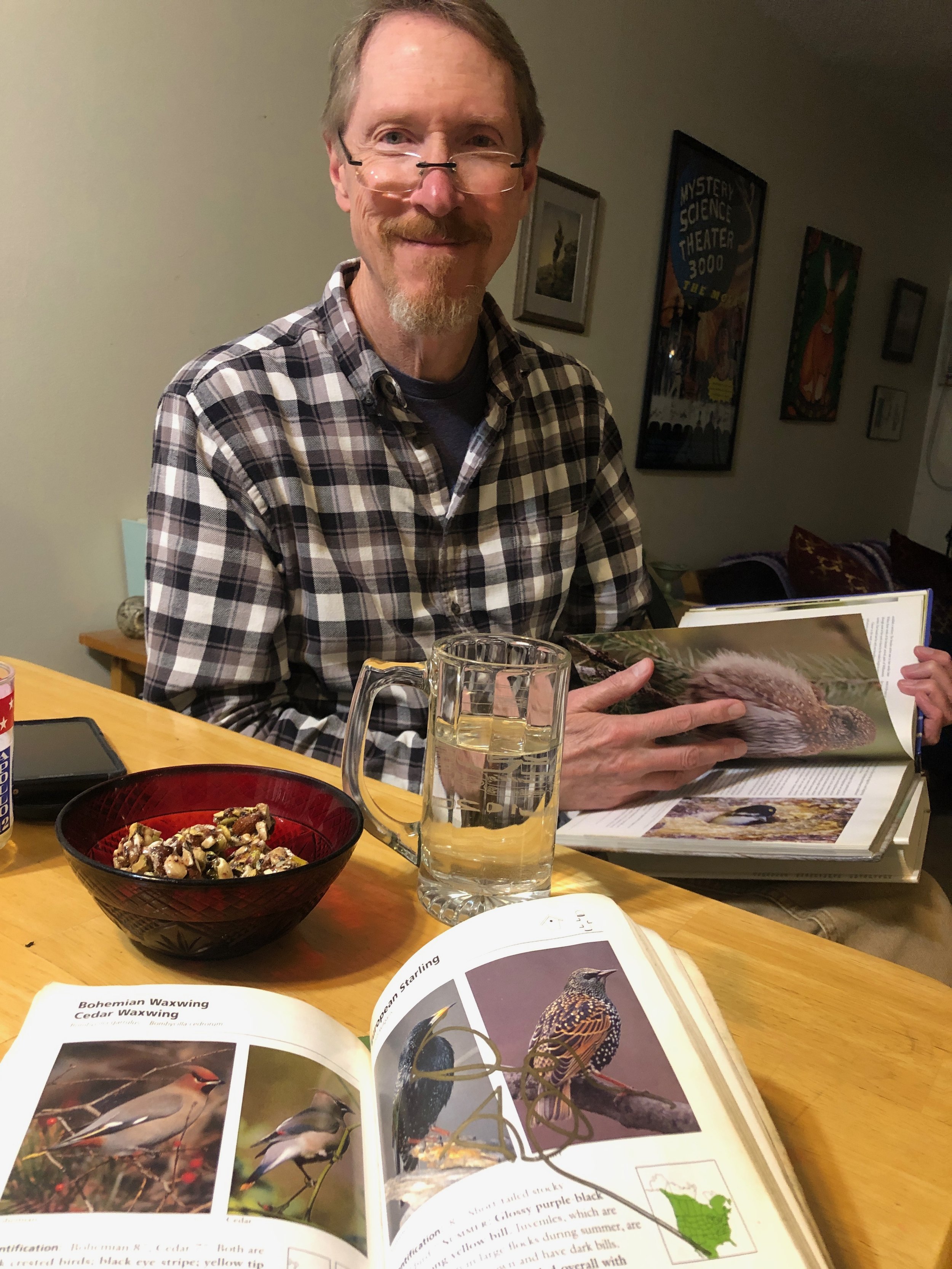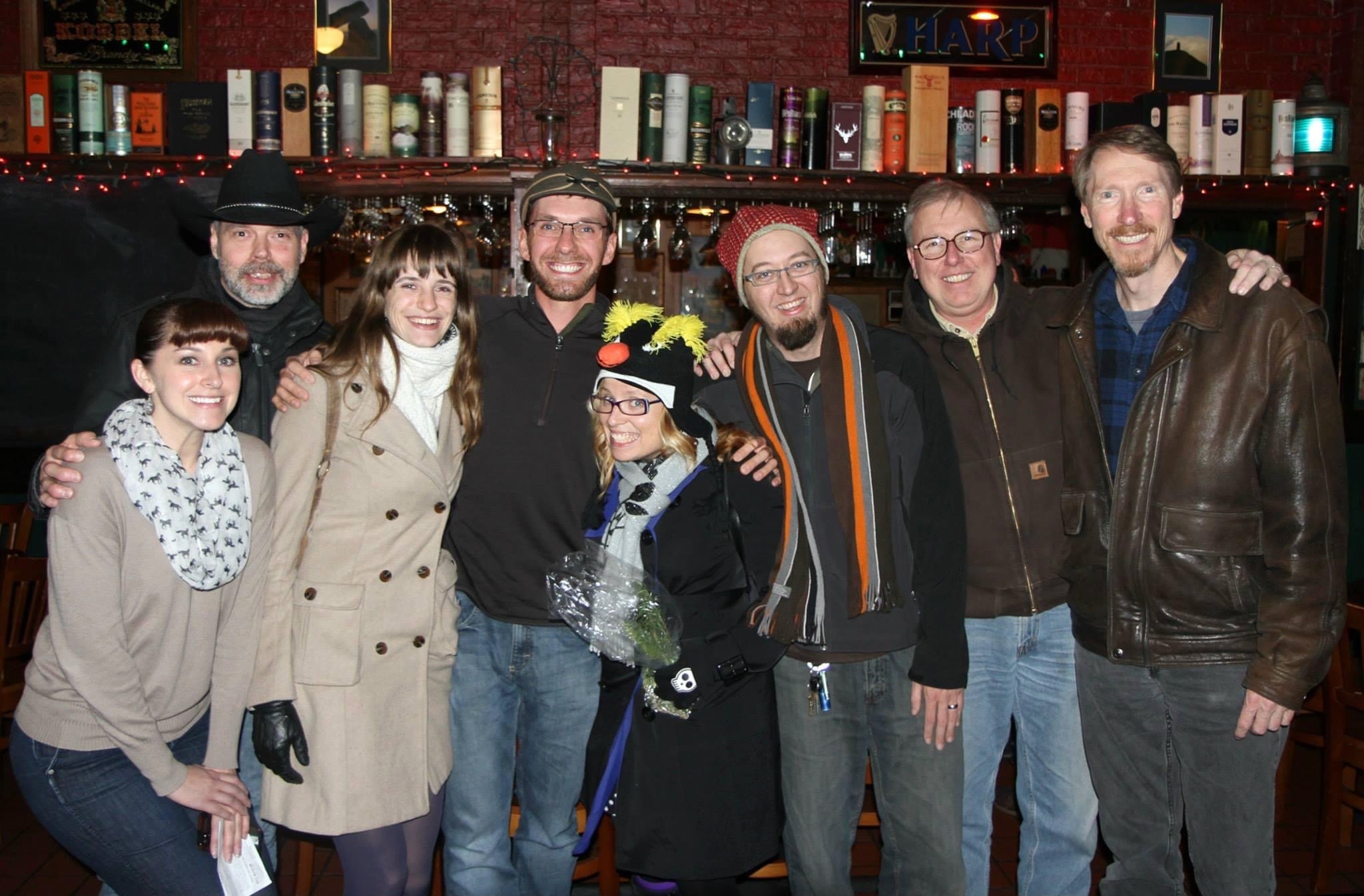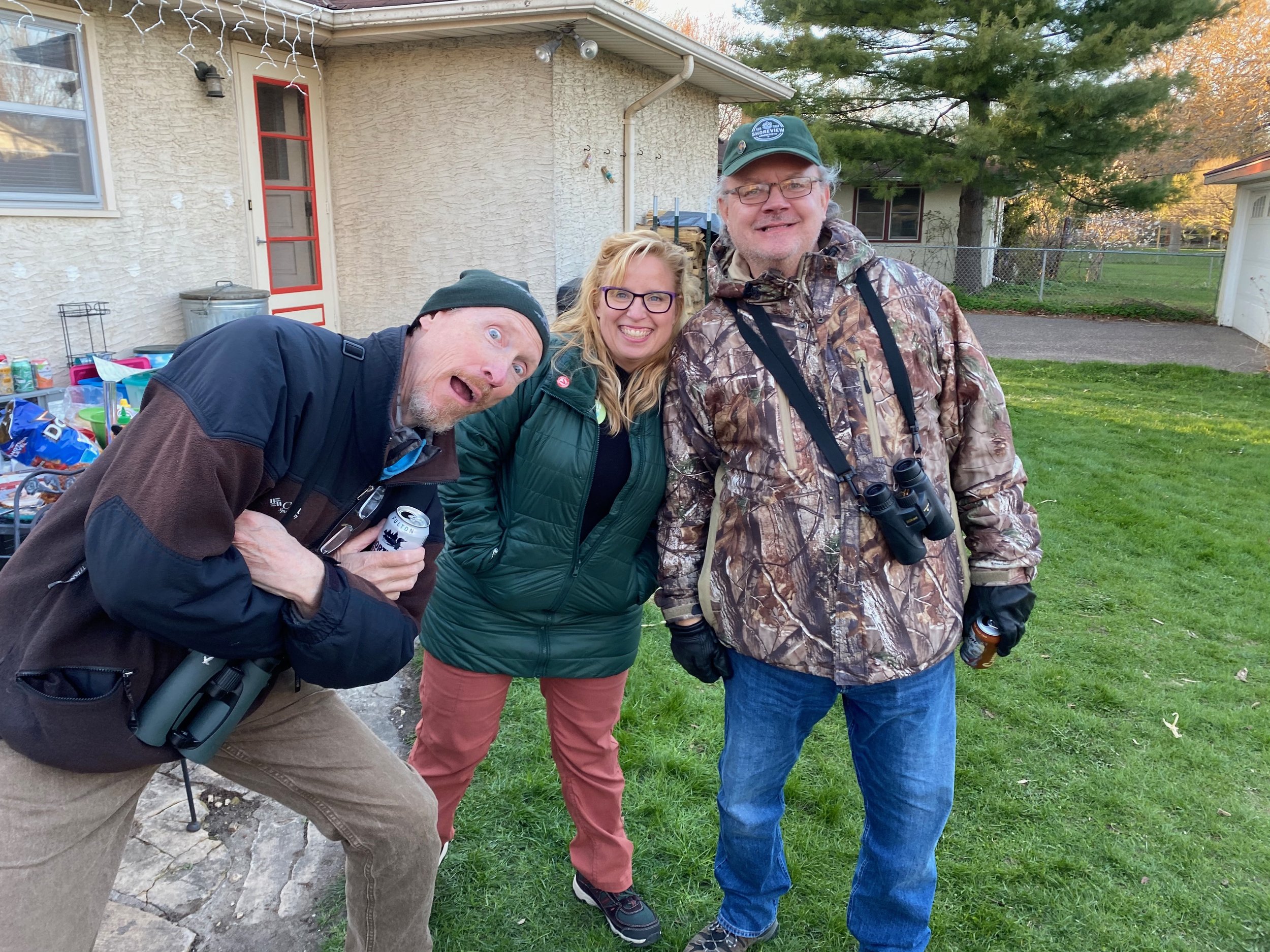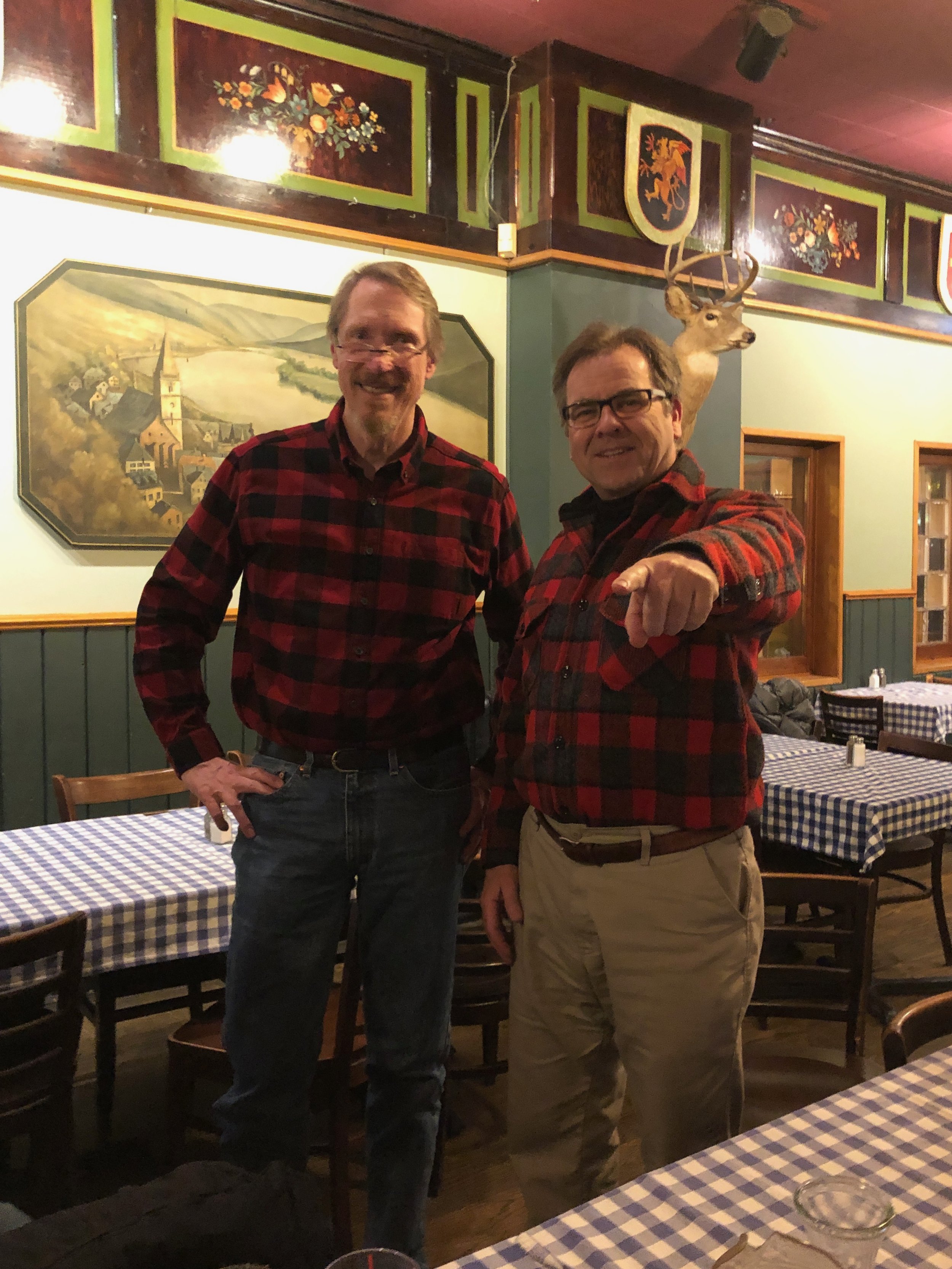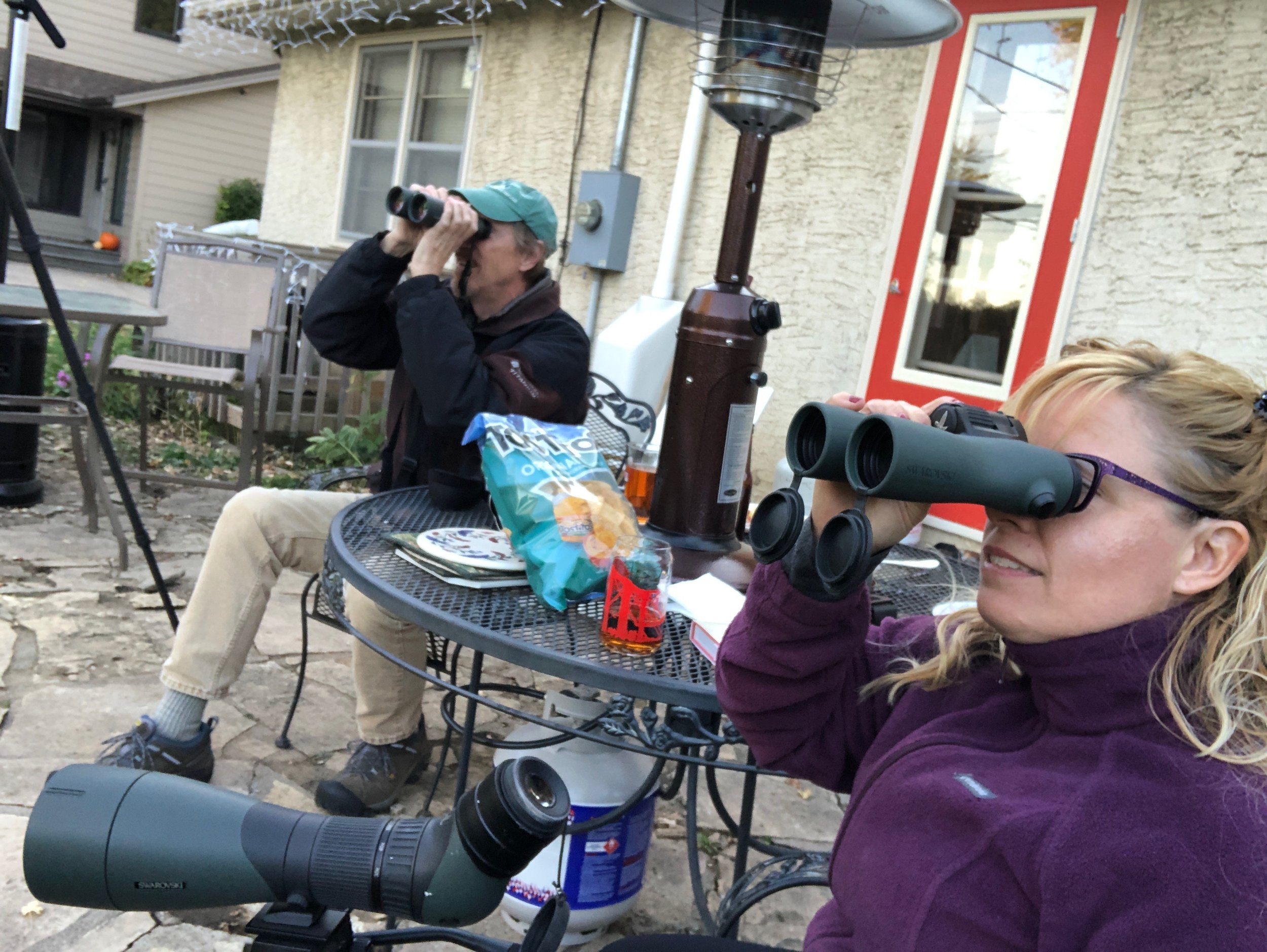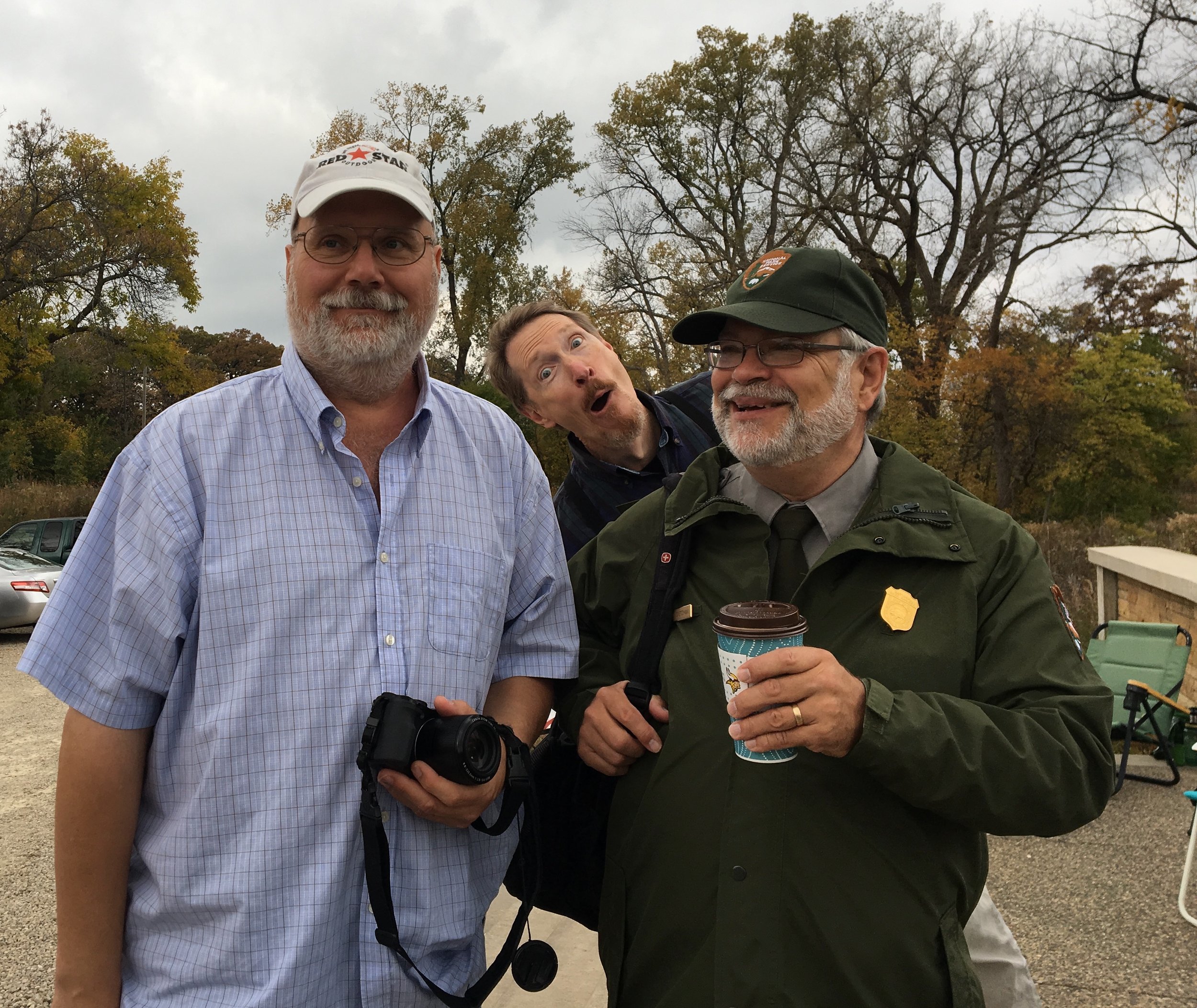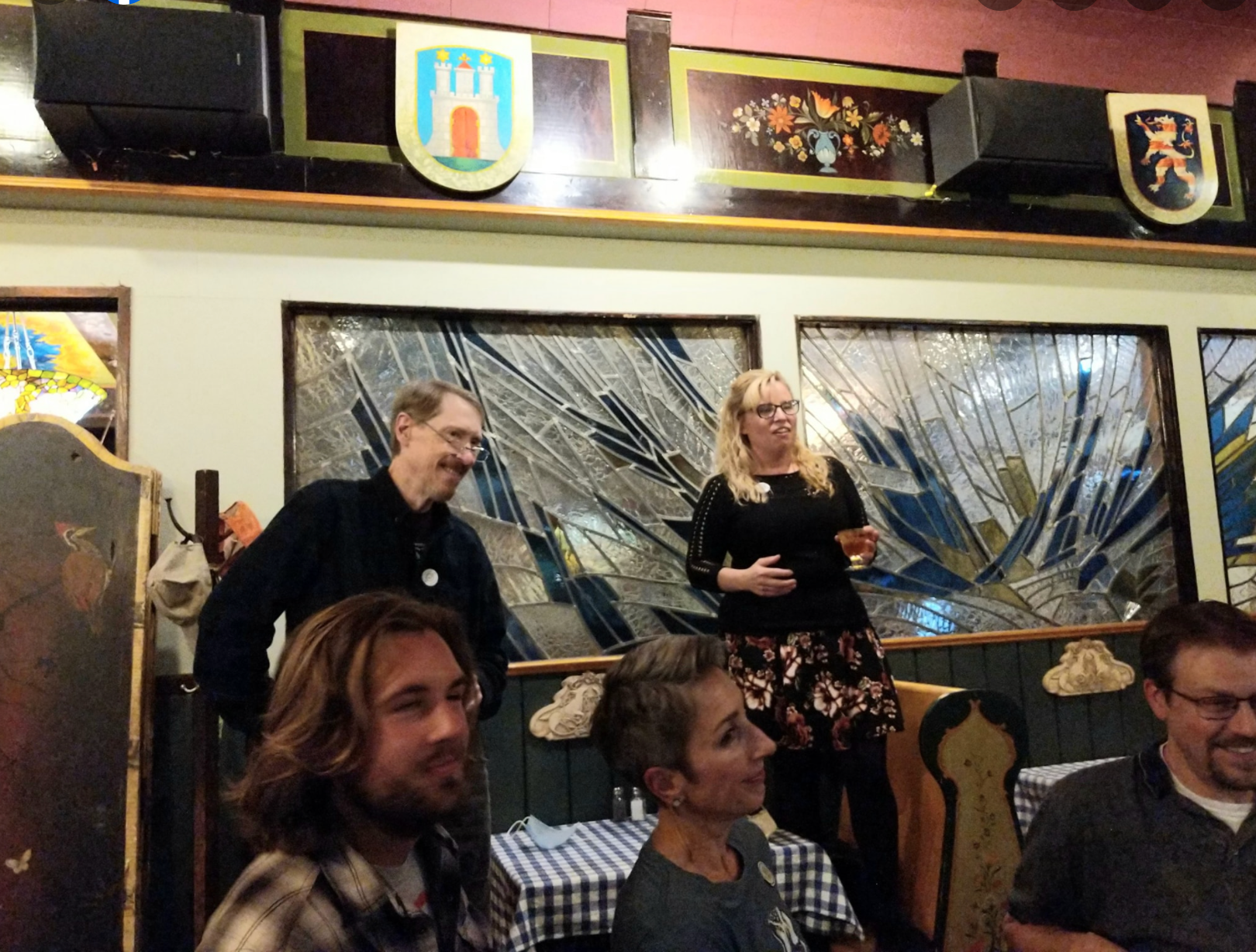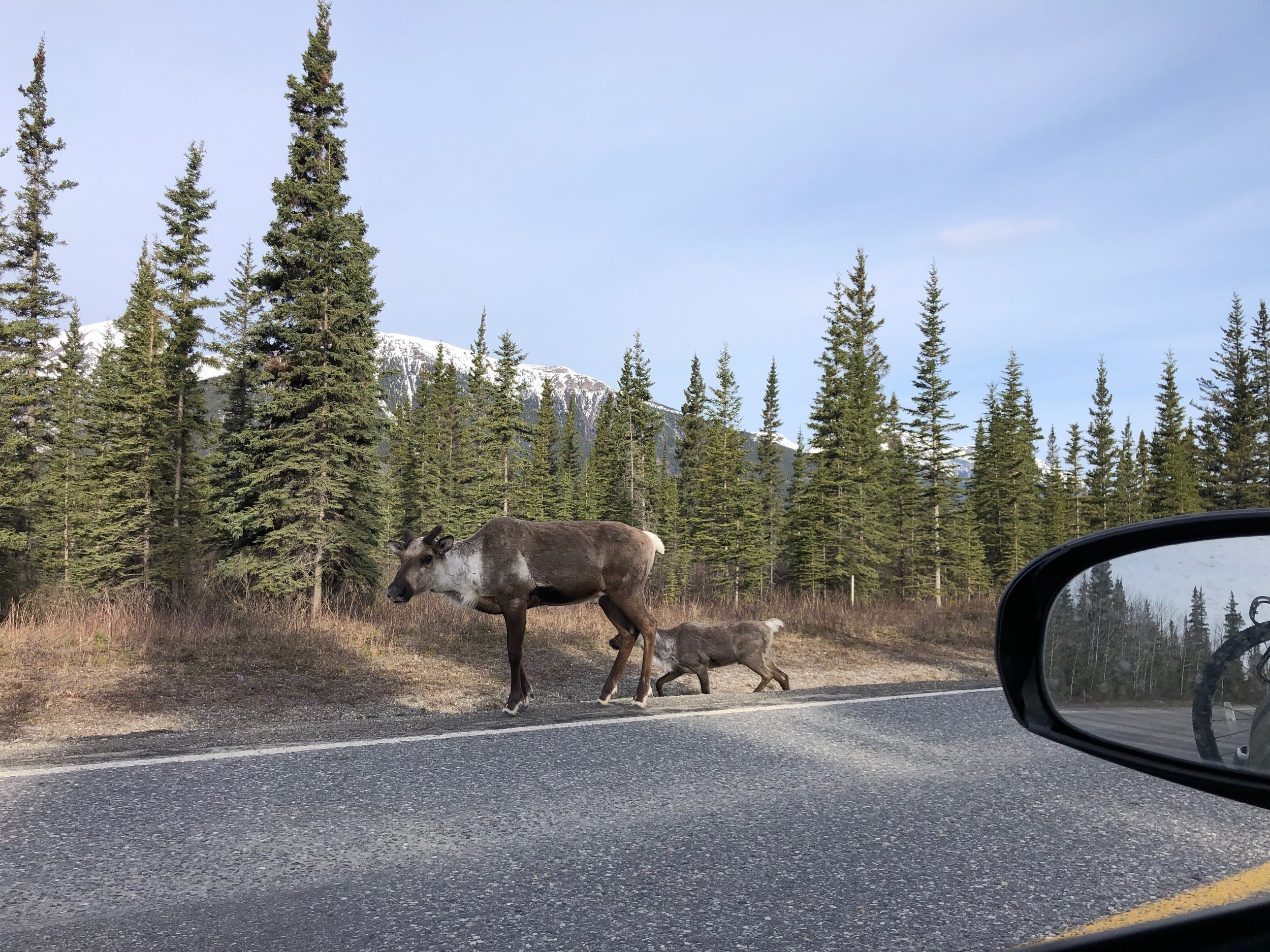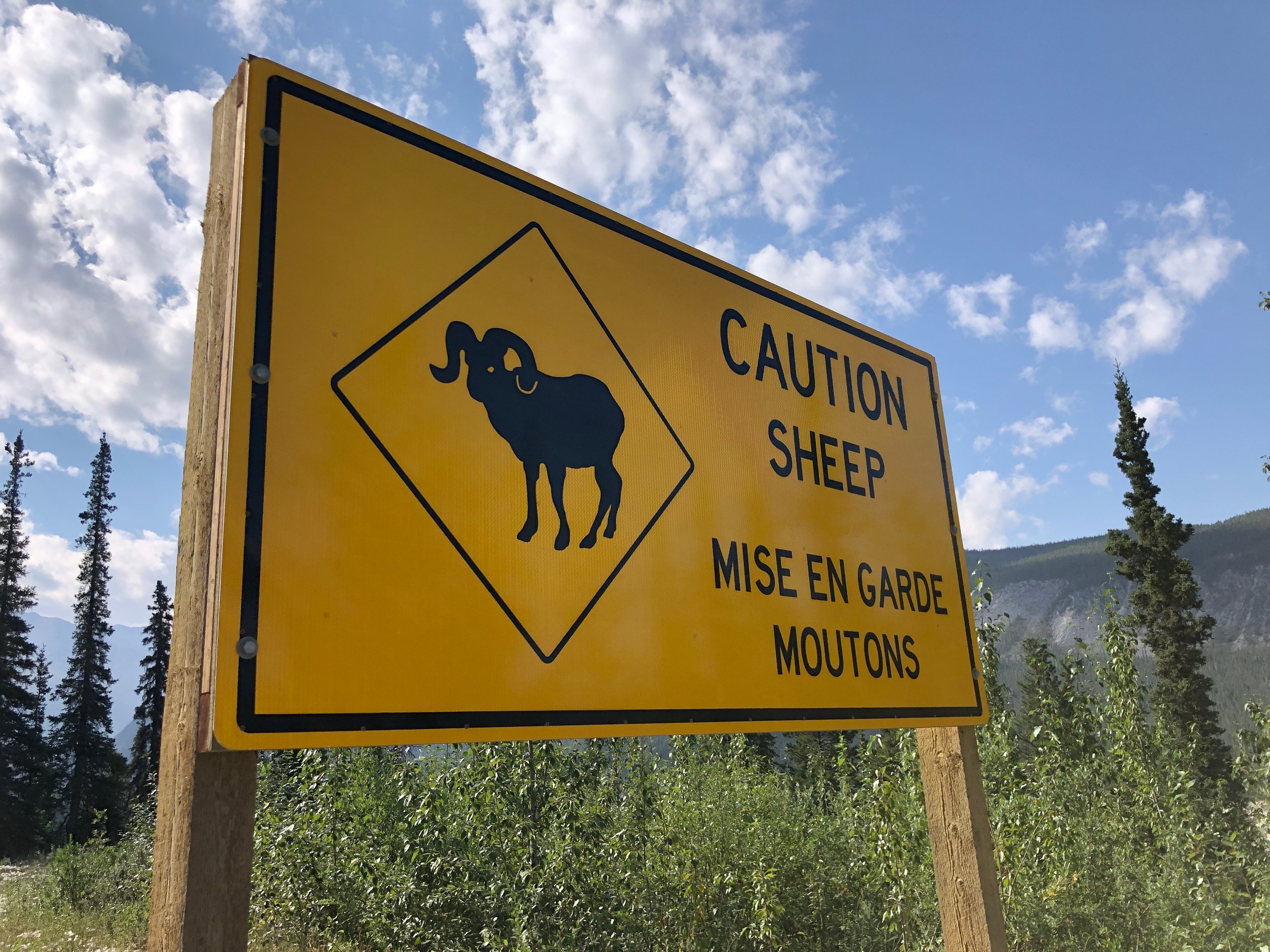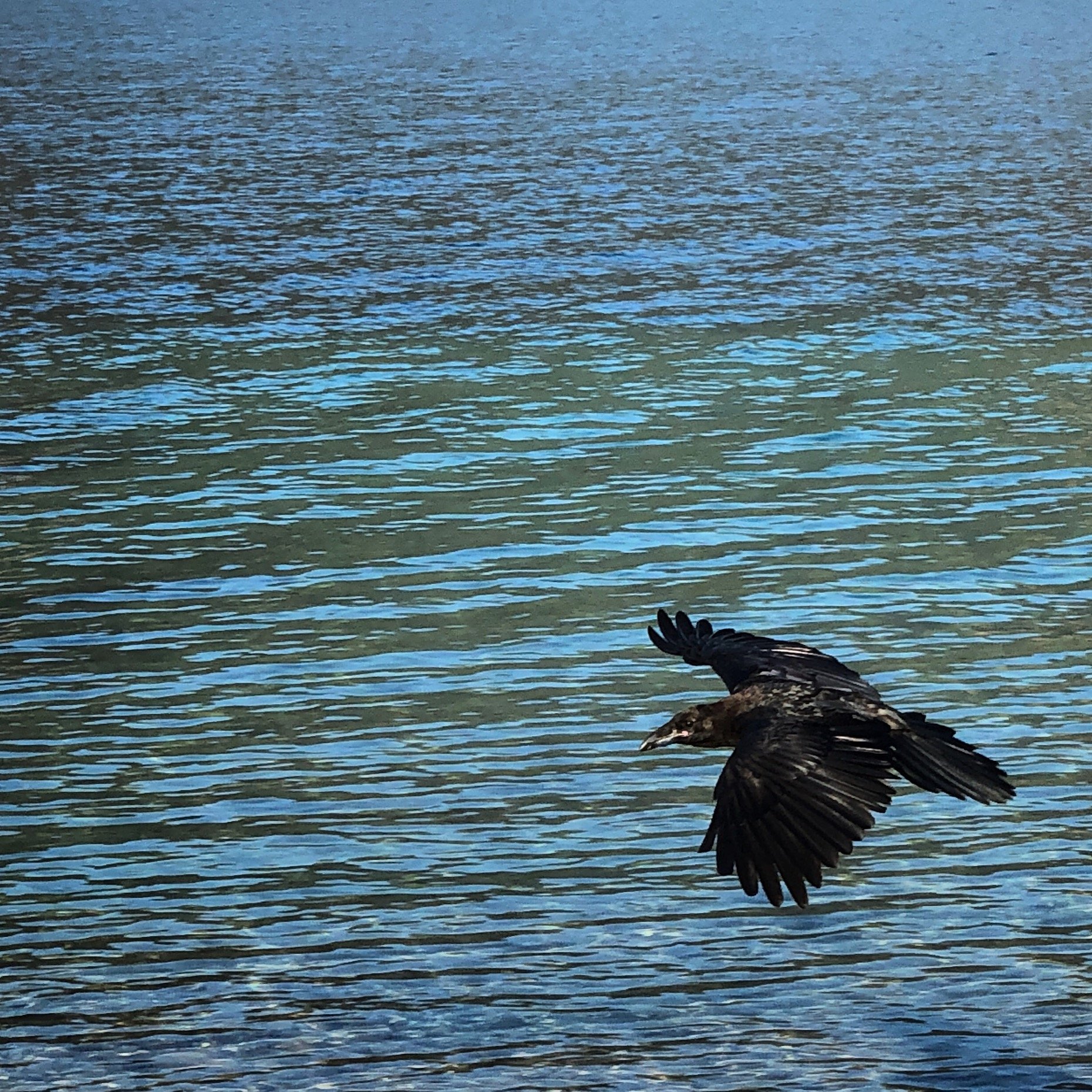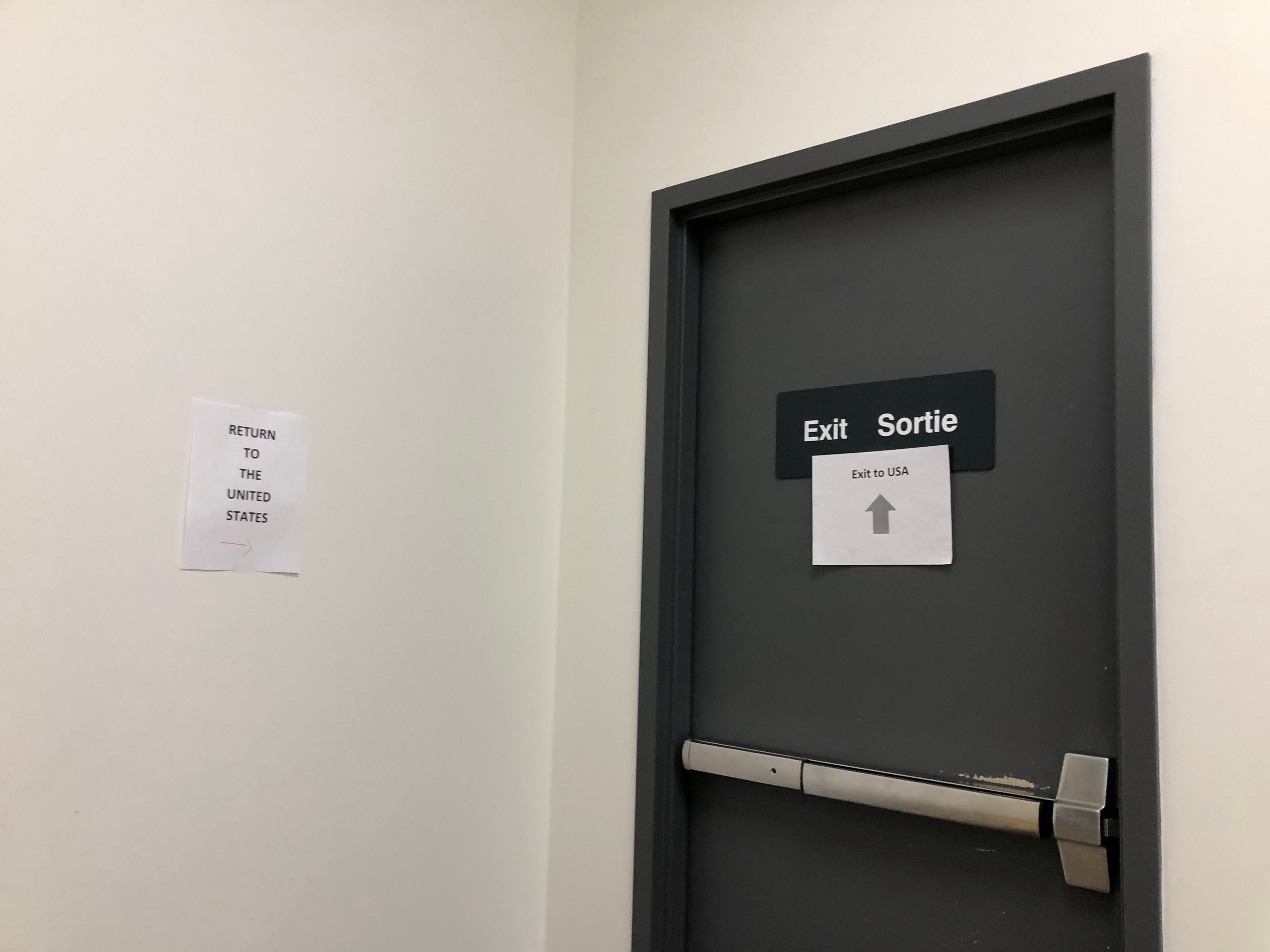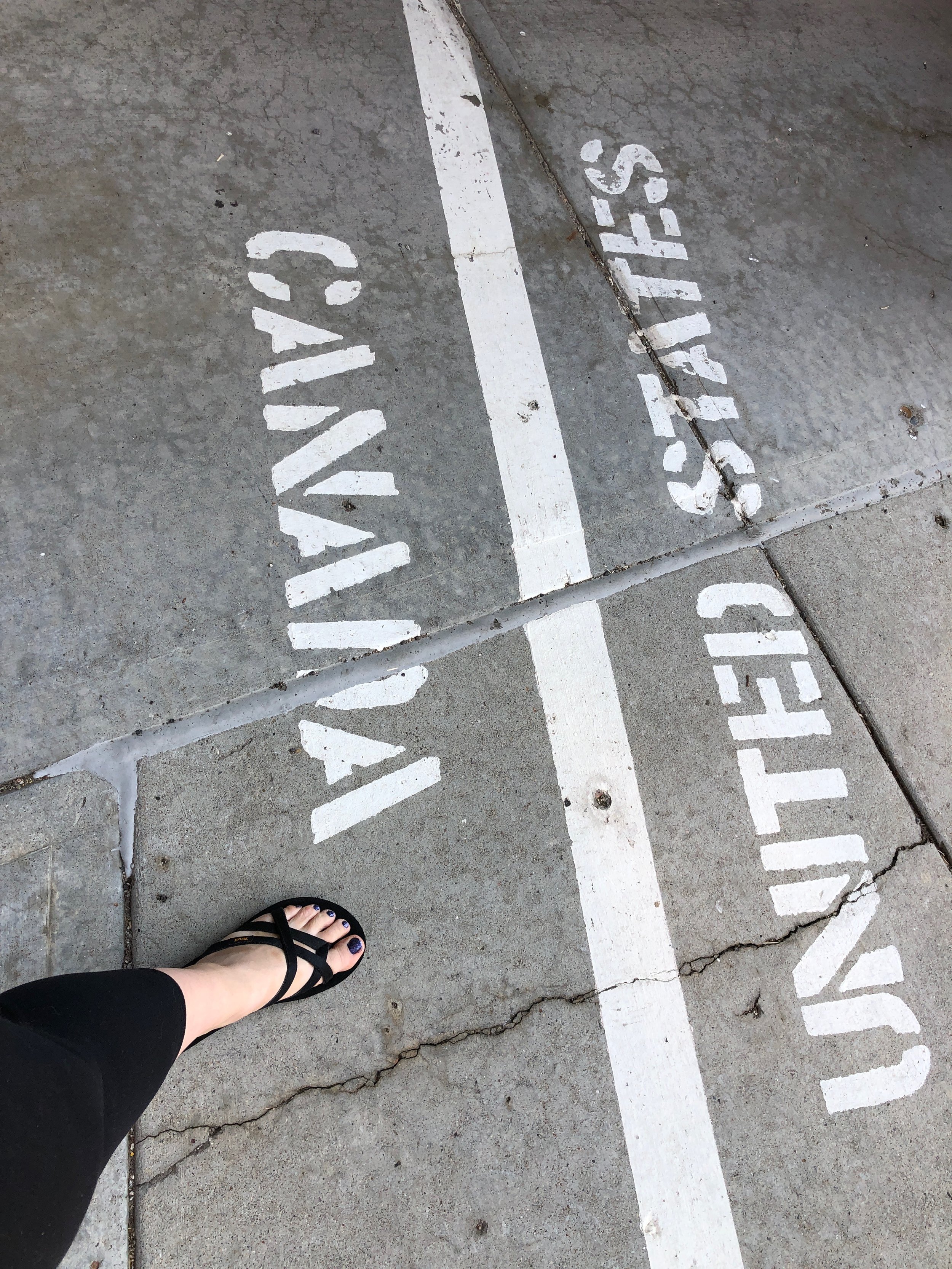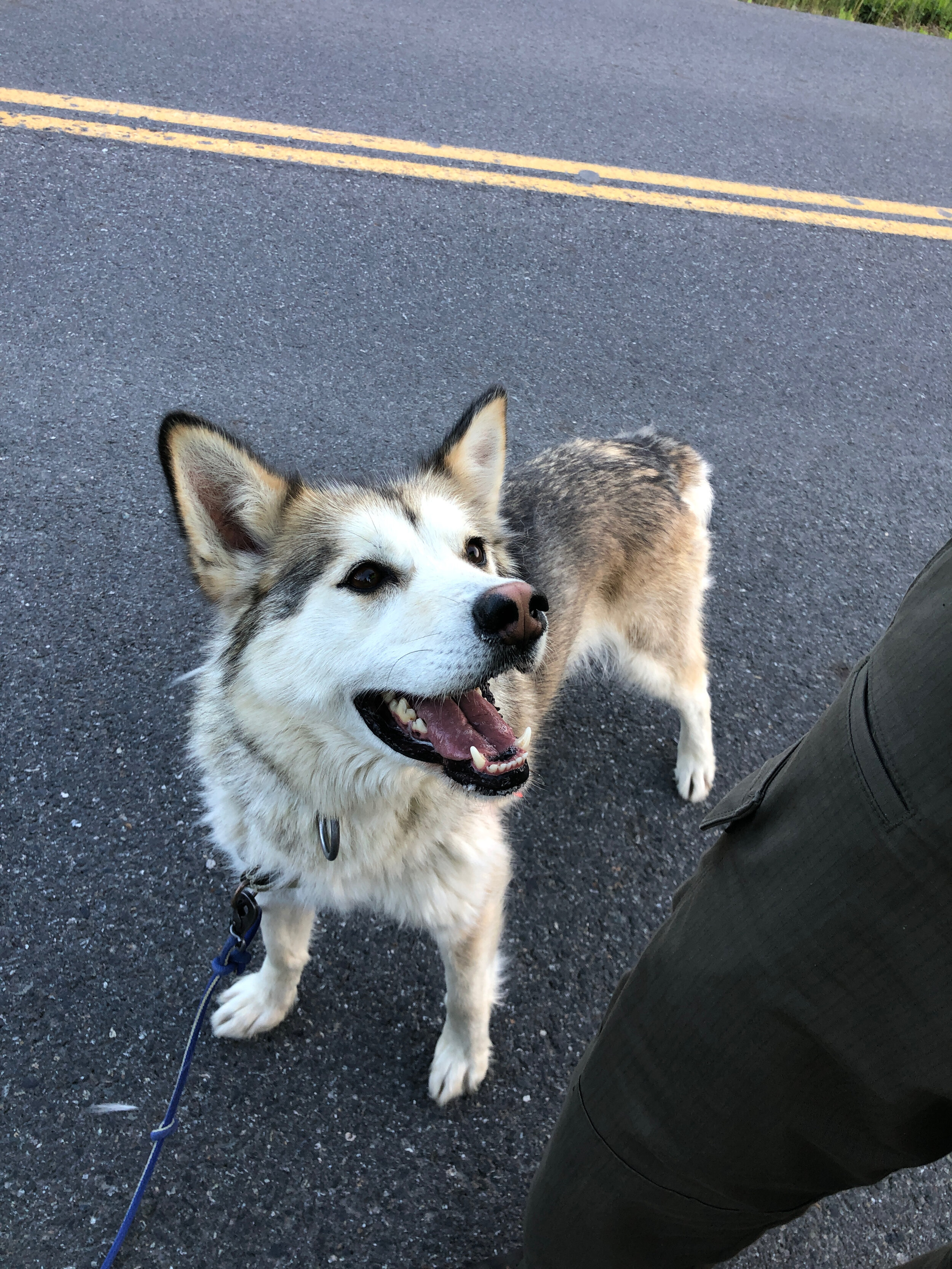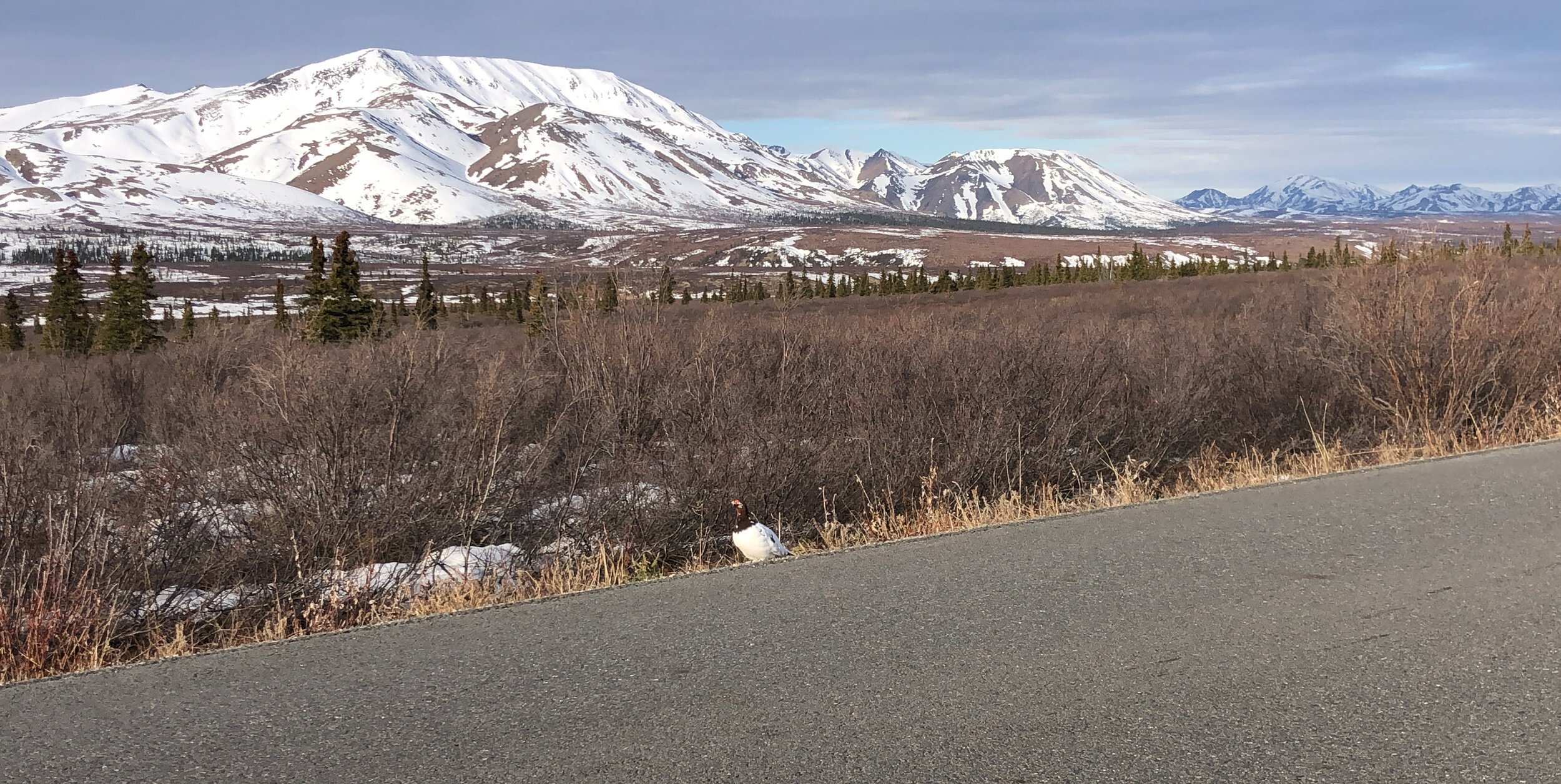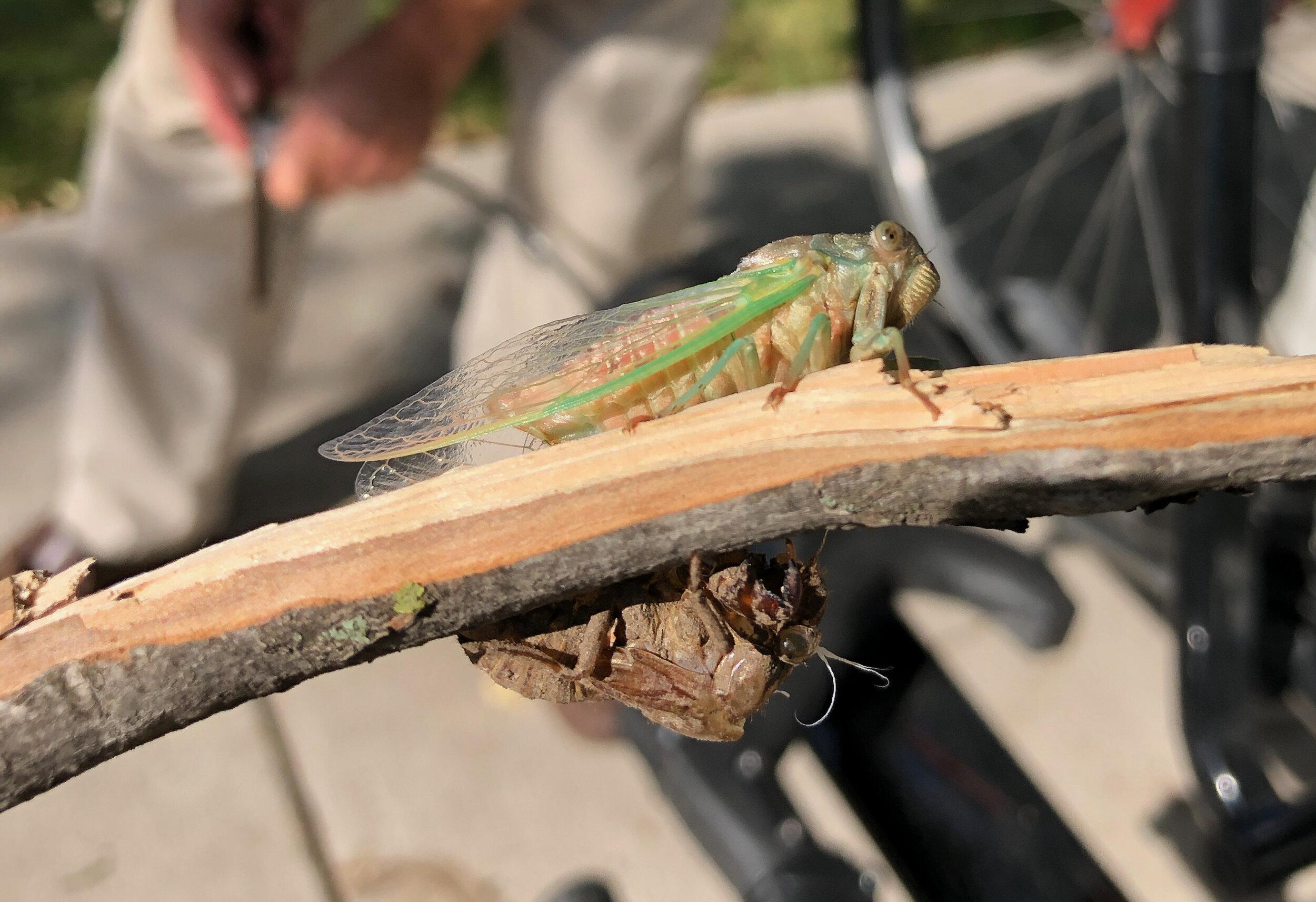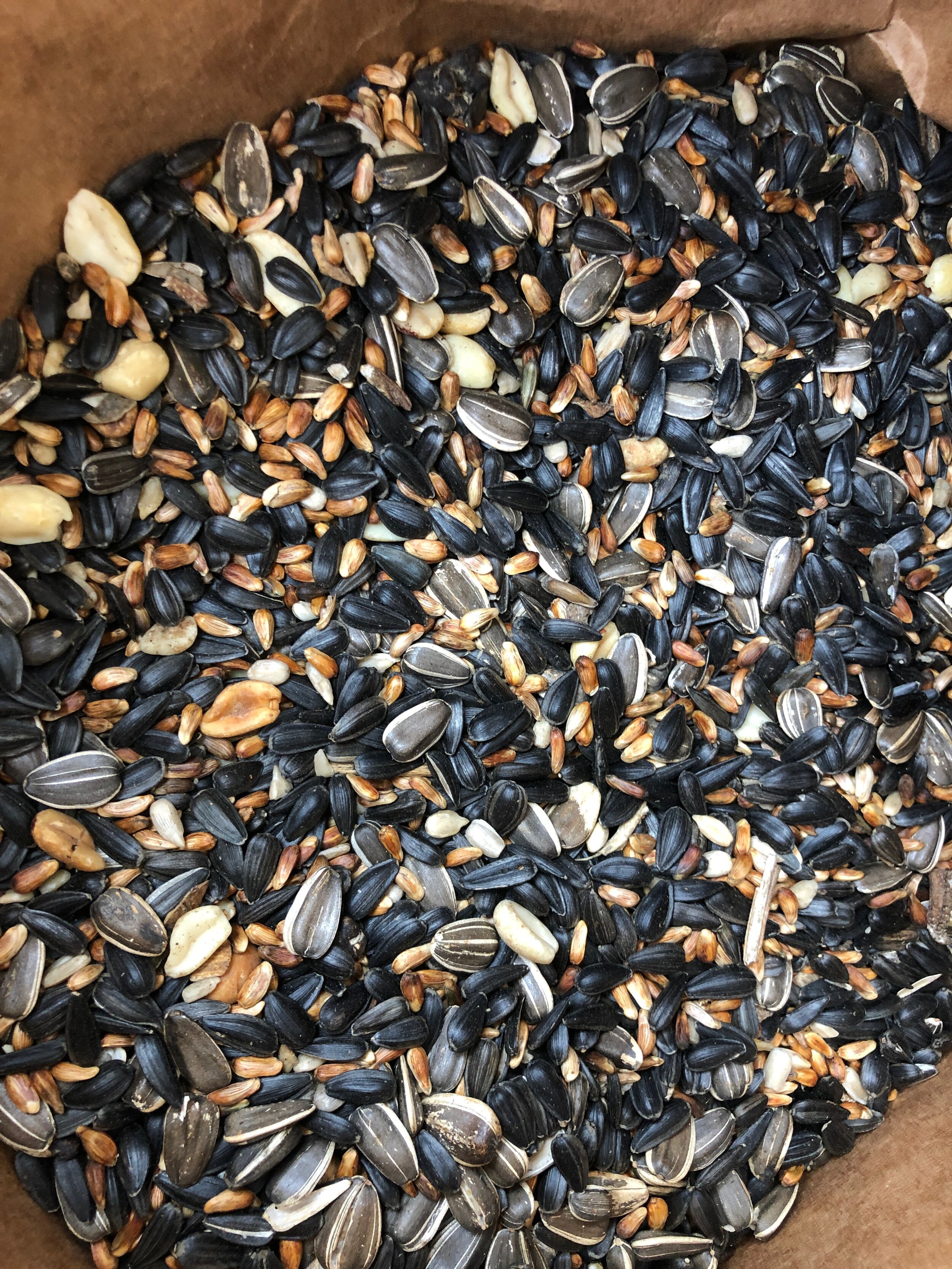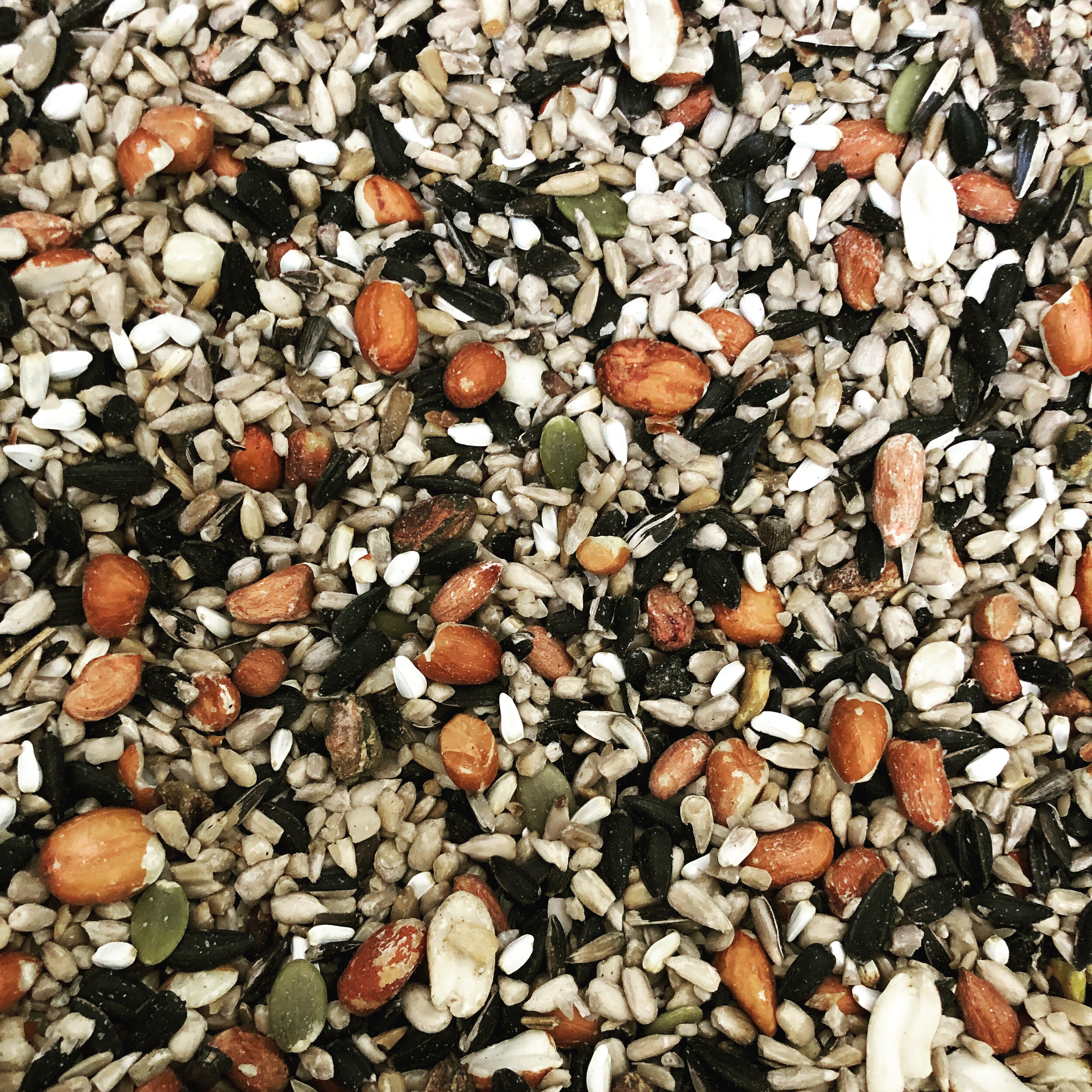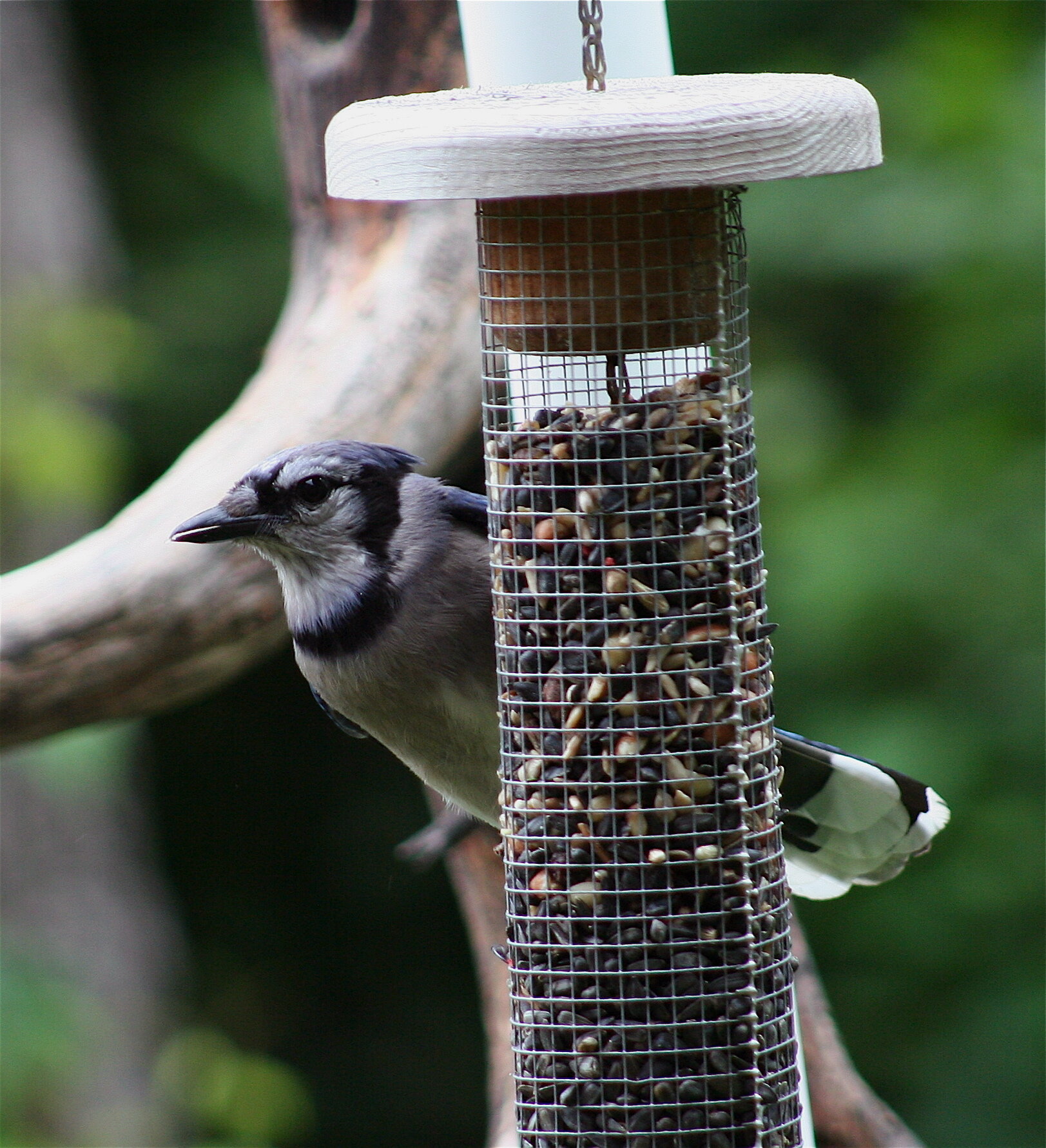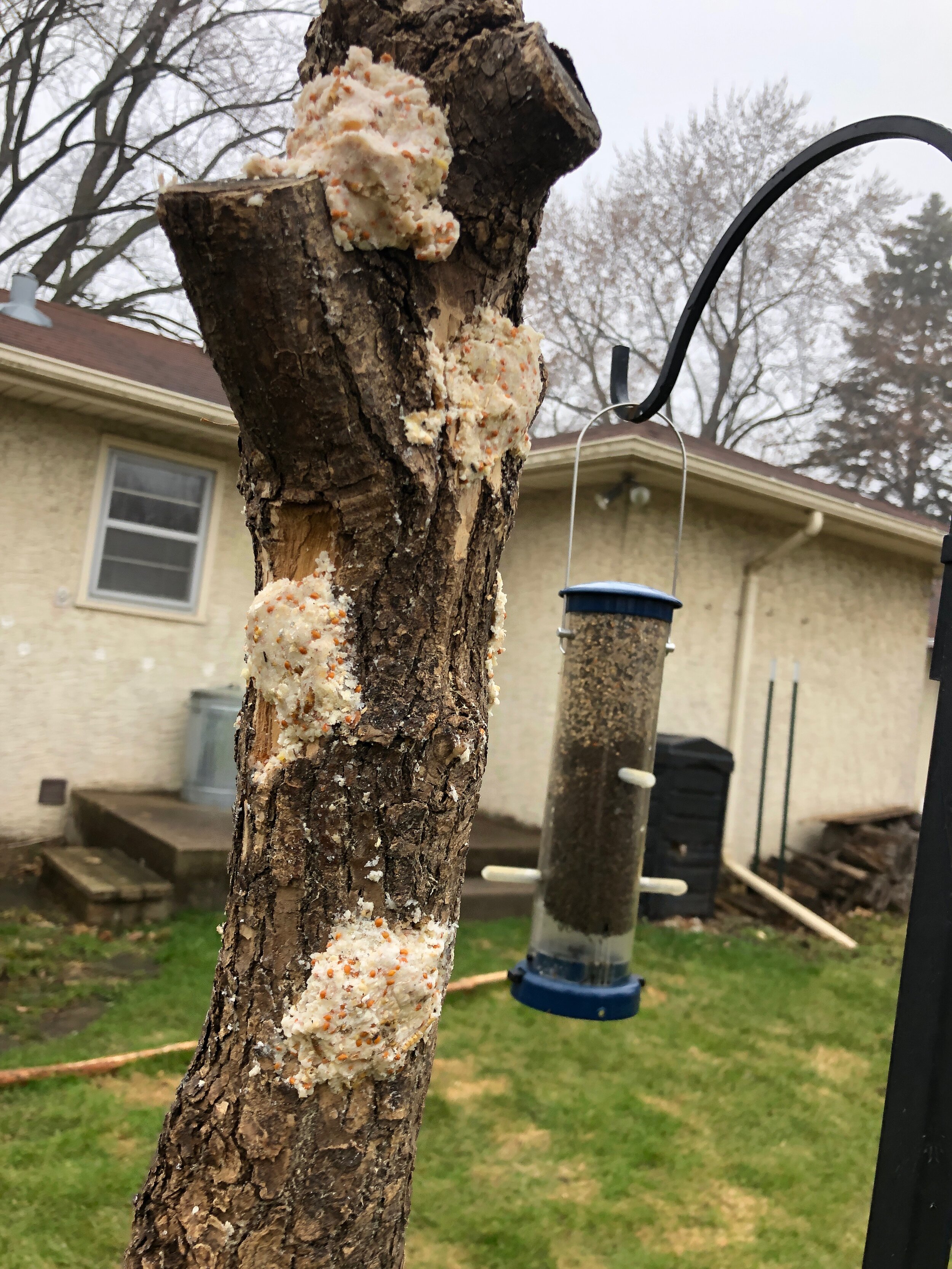I paused my bike ride for some grizzly poop on the Park Road.
Denali National Park and Preserve is about the size of New Hampshire and has one road known as the Park Road that’s about 92 miles long. Most of it is accessible only by transit or tour bus, foot, or bike. I biked some of it while I worked there last summer. One day while I was biking I found some grizzly bear poop. Whenever I posted a picture of bears or bear poop I would inevitably get texts or comments warning me to be careful of grizzly bears so I began including, “Yes, I have bear spray” in every dispatch to family and friends.
This particular patch of poop was right before Sable Pass. About a week after getting this photo while biking there, I was driving through that spot to a meeting. I was recalling my bike ride when I noticed to buses stopped in the road with a large lump lumbering in front of them:
Grizzly walking towards my vehicle.
A transit bus and a tour bus where coming from the opposite direction and had a grizzly bear in front of them. I pulled over and let the situation play out. I had never seen a grizzly bear until I came to Alaska and couldn’t believe I was having a quintessential national park experience of a bear walking past my vehicle. I kept my eyes on the bear but whipped out my phone for a souvenir video.
Not digiscoped. Just right outside my vehicle window.
I love how the bear does not make eye contact with me. Bears are like people, they like the established trails and roads, like us they appreciate the path of least resistance. Also the road is chock full of Arctic ground squirrels which are a tasty morsel for a grizzly. This bear was clearly communicating, I’m just passing through, not making eye contact, just goin’ about my bear business, please leave me alone and things won’t need to get very real.
Not unlike me when I’m in downtown St. Paul in uniform. Just trying to grab some tacos, not ready to answer questions about fishing permits or parking (not that I can answer those anyway, but people always assume I know when in uniform).
Currently, part of the road is being rebuilt because a section is on a rock glacier (it’s more rock than ice) and it’s melting because Climate Change. There’s some amazing time lapse footage of what’s been happening on the Denali website. I actually got to drive that section of road before the latest landslide and it was terrifying to me. I drove out on the side against the mountain. I wondered how I was going to drive back to my cabin and be on the cliff side that has no railing. I can’t believe busses would pass each other on that section of mountain pass, but they did on a daily basis.
When I arrived for my meeting, I told the first ranger I saw, “Polychrome Pass is terrifying. I don’t know how I’m going to drive through Pretty Rocks to get back.”
He laughed, “Oh yeah, I remember my first time.”
I said, “I’m serious. I don’t think I can drive back on my own. I live here now.”
”Ohhh,” he said. “I’ll take you out and give you some cliff driving tips.”
Transit and tour busses passing each other along Pretty Rocks. Photo from the Fairbanks Daily News Miner.
I have now been over Polychrome Pass many times. One day I was with a coworker and while she drove, I took a video of what it looks like to drive that section. Alas there was no gyrfalcon perched here that day, but you could see where one had perched based on the white wash.
Eurasian wigeon mixed in with American wigeon at Wonder Lake. It was fun to self find this bird that I have seen so many times in Europe.
Birding the park reminded me quite a bit of northern Minnesota: boreal chickadees, black-backed woodpeckers, three-toed woodpeckers, goshawks blasting through, Canada jays, redpolls, crossbills, spruce grouse and oodles of ravens. There are other exciting birds there like willow ptarmigan, Arctic warbler, and northern wheatear. It’s crazy to me that Alaska is situated to not only get migrants from Central and South America, but also southeast Asia.
If you are a birder hellbent on getting ALL the lifers in a weekend, that’s not going to happen. Birds are spread out and some are only accessible by trekking off trail into wilderness. I was there for three months and didn’t get all the lifers I could have. I had quality time with quality birds, but there is A LOT of hiking (not necessarily on trails) to get to some of these birds. But you get stunning views and very interesting mammals.
Dall sheep out my window as I was on my way to a meeting.
They say if you see Denali mountain at all that you are a “thirty percenter” because it’s usually covered in clouds. If you see it without any clouds covering the mountain at all then you are a “fifteen percenter.”
Denali is definitely worth a visit, just for the sheer grandeur. But birding itself is better on Denali Highway which isn’t in the park. But that’s another blog entry for another day.
Incidentally, I’ll be working permanently for Denali in the near future. So I suspect that more Alaska bird blogs entries will be forthcoming.
Below are some of the birds I saw while out and about in Denali.
